

Ultimate Guide To Visiting Stonehenge
By: Author Tracy Collins
Posted on Last updated: February 6, 2024
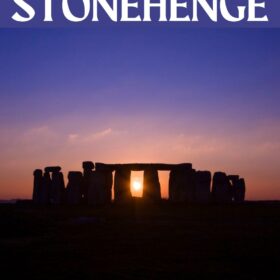
Stonehenge is a UNESCO World Heritage Site situated in the county of Wiltshire in England close to the cathedral city of Salisbury .
A trip to Stonehenge features high on many bucket lists for visitors to the UK (and with Brits themselves) and approximately 800,000 people choose to visit Stonehenge each year.
Visiting Stonehenge from London takes approximately 2 1/2 hours making it an easy day trip from London by train. If you prefer a tour or are short on time you will find that Stonehenge is often combined with visits to other destinations such as Bath , Windsor and the Cotswolds.
If you prefer a private tour to Stonehenge we recommend My Tailored Tours which specialises in some of England’s top attractions, including Stonehenge, Bath, Windsor Castle, Salisbury and Glastonbury. Their Stonehenge experts will ensure you arrive at the stones before the large crowds so that you get the best possible experience for photos with your private tour guide.
Or if you like the idea of travelling to Stonehenge in the comfort of a London black cab we recommend Discover Real London which also offers a combined Stonehenge/Bath day tour.
To ensure you make the best of your visit you will find practical information, advice and tips in this article to help you plan your trip. This includes information about how to get to Stonehenge by car or train plus a curated list of the best day tour options to Stonehenge from London.
TICKET & TOUR OPTIONS – QUICK PICKS
What is stonehenge.
- ARRIVING AT STONEHENGE – THE VISITOR'S CENTRE
VISITING STONEHENGE – TRANSPORT TO THE STONES
Images of stonehenge, how to purchase tickets for stonehenge, common questions answered, other essential tips to know before you visit stonehenge, visiting stonehenge by car , visiting stonehenge by train from london, visiting stonehenge on a tour, enjoy your trip to stonehenge, book your trip 🇬🇧.
Stonehenge is the best-known prehistoric monument in Europe . The stones were raised 4500 years ago as an ancient temple by prehistoric people.
2018 was the hundredth anniversary of the gifting of Stonehenge to the nation by local barrister Cecil Chubb and his wife Mary. Before this date the stones had fallen into disrepair with some of them even propped up by wooden poles. Since 1918 the stones have been cared for and are now looked after by English Heritage for the benefit of the nation.
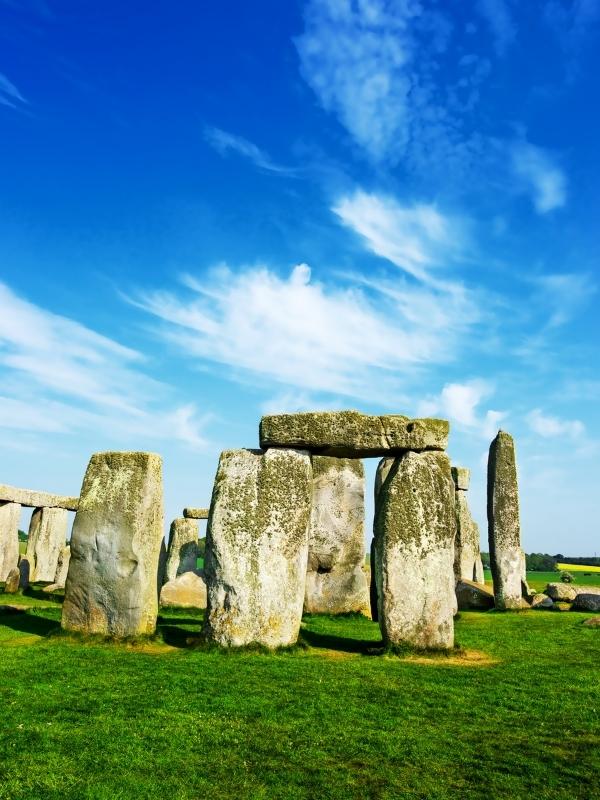
Whilst the stones which comprise Stonehenge were set up around 2500 BC the actual monument complex dates back between 8500 and 7000 years BC.
It is believed that most of England was covered in trees and woodland while the area around Stonehenge was an open landscape and this is a possible reason why the area was chosen.
ARRIVING AT STONEHENGE – THE VISITOR’S CENTRE
When you are visiting Stonehenge you will arrive at the visitor’s centre as your first port of call. The visitor’s centre is located 2.1 km (1.5 miles) from the Stone Circle, at Airman’s Corner.

The visitor’s centre at Stonehenge consists of an exhibition, a café and a gift shop as well as an outdoor gallery where the reconstructed Neolithic houses can be found. The exhibition is very good we spent quite some time reading and learning more about Stonehenge and the surrounding area.
Outside the centre are reconstructed Neolithic houses. You can enter the houses and gain some insight into how people lived 4500 years ago.
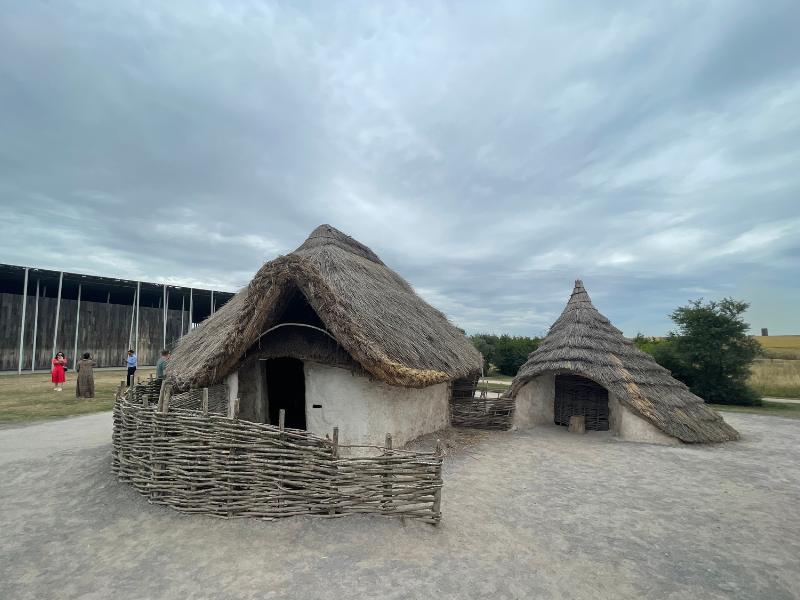
There is also an example of the stones used to construct Stonehenge so you can get an idea of the sheer size. Can you imagine dragging this across the English countryside from Wales?
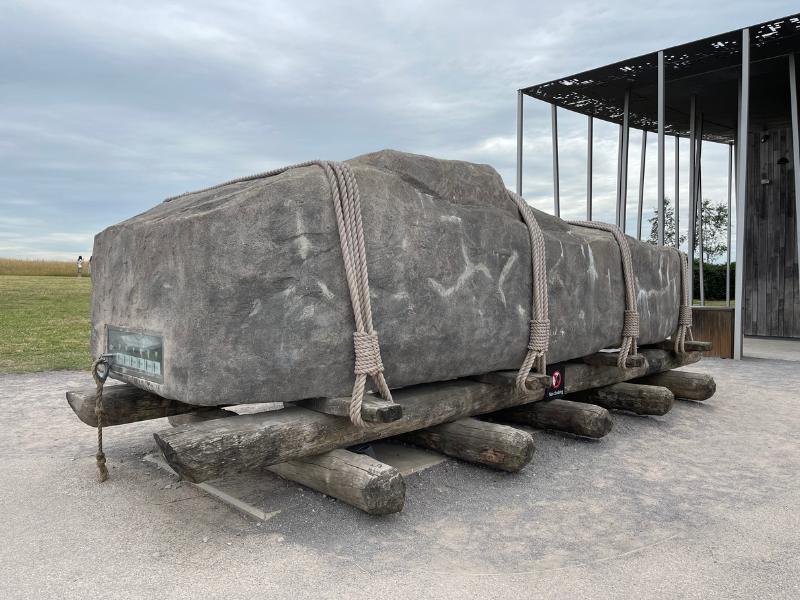
To get to the stones you need to hop onto one of the free shuttle buses which leave from the visitor’s centre. The bus ride takes approximately 10 minutes. Buses leave every few minutes so don’t worry if you miss one as there will be another leaving soon after.
Download the free audio guide from the app store before you arrive or pick up an audio guide at the visitor’s centre for a small fee.
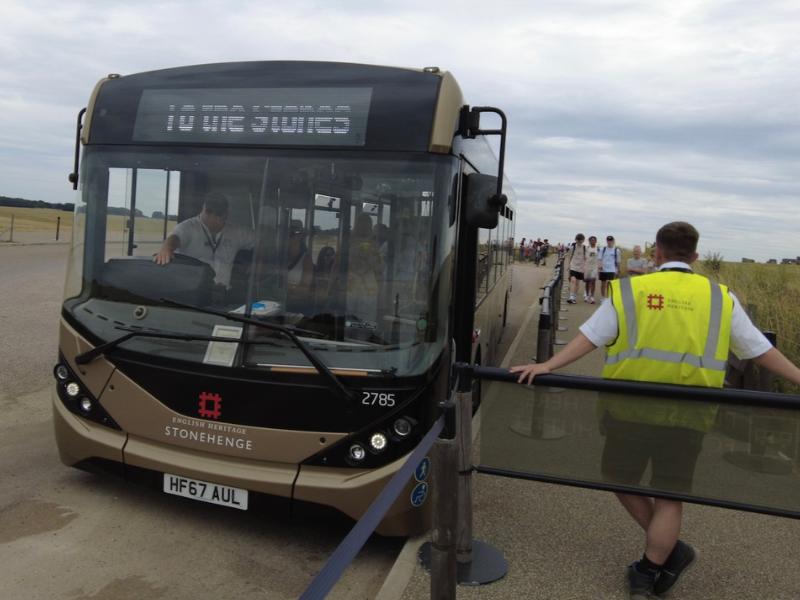
The surrounding landscape is full of barrows – Bronze Age burial mounds. And standing at Stonehenge you really get a sense of how it looked during prehistoric times. During the summer solstice, the sun rises behind the heel stone and its rays shine into the heart of Stonehenge.
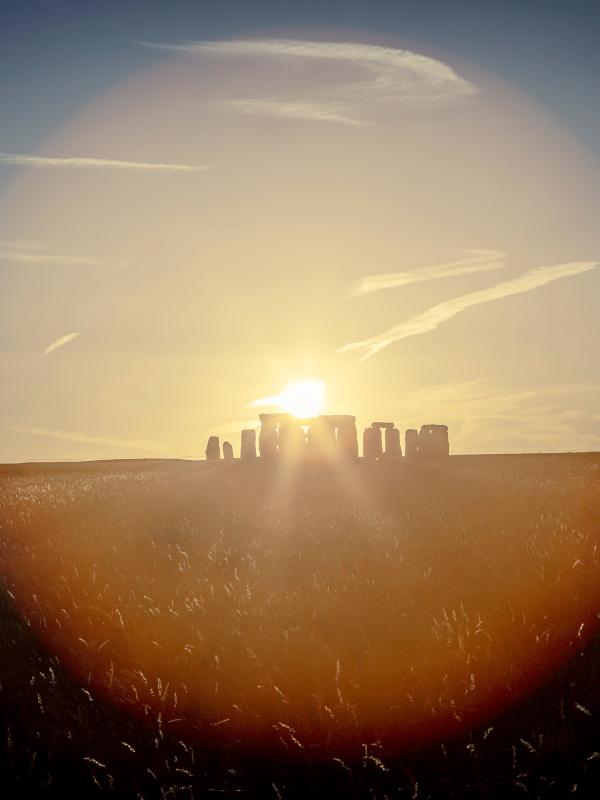
The stones used in Stonehenge comprise of larger sarsens and smaller bluestones. While the sarsens make up an inner horseshoes and and outer circle the bluestones are set up between them and form a double arc.
The larger sarsen stones are made from hard silicified sandstone whilst the smaller bluestones are made from various types of rock all found in the Preseli Hills in south-west Wales.
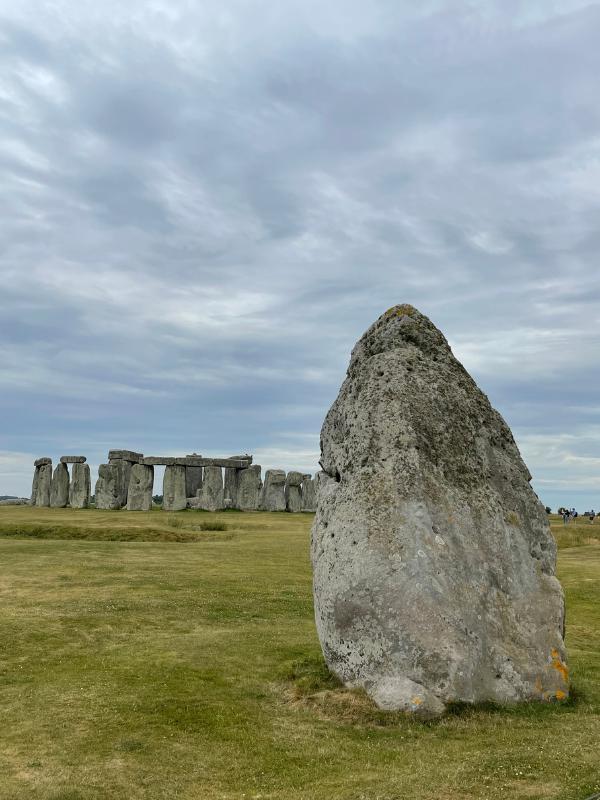
The large upright stone which can be seen standing at the side of the Stone Circle is called the heel stone. Its significance becomes apparent during the summer solstice where it marks the position of the rising sun.
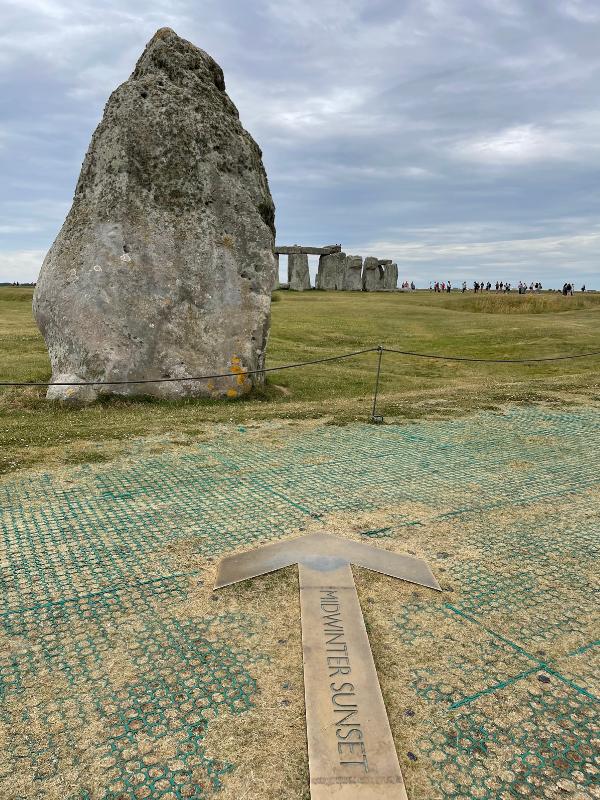
PRACTICAL THINGS TO KNOW FOR YOUR STONEHENGE VISIT
I highly recommend that you plan your visit and book your tickets in advance.
Stonehenge is a major tourist attraction and is always busy whenever you visit even in winter. The stones are particularly busy during the summer solstice on June 20/21st and the winter solstice in December. At these times the stones are only open on a managed access basis. The alignment of the stones on the longest and shortest days attracts thousands of visitors and it is the only time you can go into the stone circle itself.
Entrance to Stonehenge is managed through timed tickets. If you want to guarantee entry on the day and time of your choice then you will have to pre-book tickets or book a tour.
Skip-the-queue tickets can be purchased through Get Your Guide (my tour operator of choice) and are highly recommended if you want to avoid crowds and queues.
Entry is free to members of English Heritage and members of the National Trust in England or those who hold a National Trust Touring Pass only though you still need to book your time slot.
If you are visiting from overseas and want to visit Stonehenge independently and are intending to visit more English Heritage owned properties I would recommend buying an English Heritage Attractions Pass .
This pass is only available to visitors from overseas. The pass entitles holders to free entry to over 100 English Heritage sites including Stonehenge, Dover Castle, Hadrian’s Wall and Tintagel Castle.
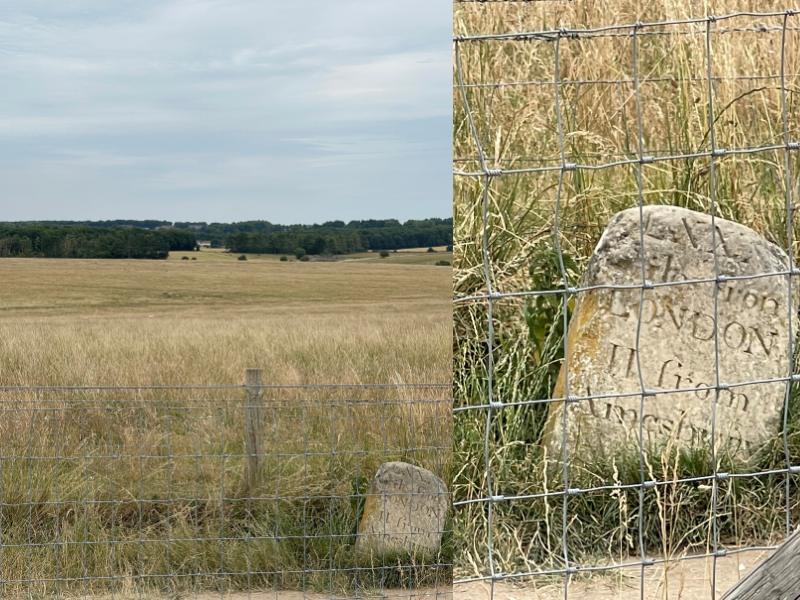
When is the best time to visit Stonehenge?
I would recommend avoiding the solstices when Stonehenge is very busy. The summer months can also be a little challenging as those are peak holiday times for UK residents too (school holidays in England start mid July until the first week of September) Winter is darker, colder and quieter and you will need to wrap up warmly when you visit.
When is the best time of day to visit Stonehenge?
I would recommend as early in the day as possible as the roads around Stonehenge can become gridlocked, particularly during the busy summer months. In winter it is dark around 4 pm so it is best to see the stones in the morning if you can.
Stonehenge visiting hours are 9:30 – 3:00 during the winter months and 9:30 – 5:00 over the spring/summer/autumn months. The last entry is 2 hours before closing time (so if you book a ticket for 3 pm in the winter Stonehenge closes at 5 pm)
How close can you get to the stones?
People often ask how close can you get to Stonehenge or if you can walk up to Stonehenge. The only time visitors are allowed in the circle is during the summer and winter solstice celebrations.
At all times visitors can walk around the stone circle. If you would rather walk up to Stonehenge from the visitor’s centre it is about a 40-minute walk.
Wiltshire County Council also has a guide to travelling to Stonehenge which includes walking and cycling routes.
I would recommend checking out the weather forecast the day before your visit so you can dress appropriately. Stonehenge is open air so wrap up warmly in winter and bring an umbrella if rain is on the horizon. If you are unsure of what to pack for your trip to the UK and Stonehenge you may like to read my packing list for the UK .
Please note that dogs are not allowed in the Stone Circle Monument Field or on the shuttle bus (unless they are assistance dogs)
After viewing the stones catch the bus back to the visitor’s centre. If you are keen to purchase souvenirs of your visit you can find lots of Stonehenge gifts and merchandise in the Stonehenge gift shop in the centre.
HOW TO VISIT STONEHENGE FROM LONDON – BY CAR, TRAIN OR TOUR
There are several options available if you plan to visit Stonehenge from London .
Stonehenge is 145 km from London via the M3/A303 and A360. Come off the A360 at Airman’s Corner.
If you are visiting during the summer allow plenty of time as the roads can become very busy around Stonehenge.
If you are visiting Stonehenge by car you will find parking is free for English Heritage members and Stonehenge ticket holders.
Use the postcode (zip code) SP4 7DE in your SATNAV/GPS.
Latitude: 51.1831565223
Longtitude : -1.85887471623
The nearest train station to Stonehenge is Salisbury which is located 9 1.2 miles away. There is a tour bus which departs from the train station and connects with Stonehenge.
Click here for train prices and times to Salisbury.

If you are not planning to visit Stonehenge by car or take a day trip from London by train I would recommend considering a tour.
I have selected some of the best tours to Stonehenge for you including multi-centre tours.
There are many things to do between London and Stonehenge so I recommend adding other popular destinations such as Bath, the Cotswolds and Oxford into your trip.
London: Stonehenge Half-Day Morning or Afternoon Tour
This 6-hour tour from London includes transport, expert commentary with an audio guide and a scenic drive through Salisbury Plain. You will have 2 hours of free time to explore Stonehenge.
CLICK HERE TO CHECK PRICES AND AVAILABILITY FOR THE HALF-DAY TOUR TO STONEHENGE FROM LONDON
London: Stonehenge and Bath Full-Day Tour
Visit the iconic site of Stonehenge and uncover its mysteries with the aid of an informative audio guide tour and enjoy free time to explore the lovely city of Bath at your own leisure on this full-day tour departing from London.
CLICK HERE TO CHECK PRICES AND AVAILABILITY FOR STONEHENGE AND BATH FULL-DAY TOUR
Windsor, Oxford and Stonehenge Day Tour from London
What better way to see the English countryside than with a day trip to Stonehenge, Windsor Castle, and Bath from London? Discover the famous Roman Baths in Bath, look out for the Queen in Windsor, and see the world’s most famous stone circle.
CLICK HERE TO CHECK PRICES AND AVAILABILITY TO WINDSOR, OXFORD AND STONEHENGE
Stonehenge, Stratford, Bath & Cotswolds Day Tour from London
Explore the region beyond London with a full-day excursion to sites of cultural and historical significance. Visit Stonehenge, see Shakespeare’s home at Stratford-upon-Avon, explore the gorgeous city of Bath and admire the picturesque Cotswolds hills.
CLICK HERE TO CHECK PRICES AND AVAILABILITY FOR THE STONEHENGE, STRATFORD, BATH & COTSWOLDS DAY TOUR
To learn more about Stonehenge before your visit, look at the Stonehenge Skyscape website. It was created to let viewers see the skies above Stonehenge and learn how the stones aligned with the sun, moon and planets. It is an excellent website and you can see the stones in real time (day or night)
Enjoy your visit to Stonehenge whether you travel there independently or take a tour it is worth including in your UK travel itinerary.
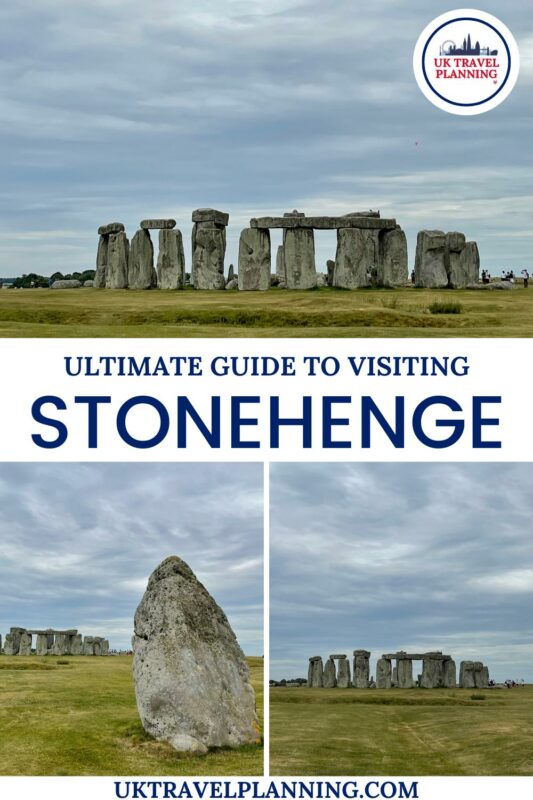
🏨 Book your accommodation – Booking.com – VRBO – Plum Guide
🚐 Book your group tour – Viator
🚐 Book your group tour – Get Your Guide
🚘 Car Hire – Discover Cars
🚖 London Airport Transfers (& beyond) – Riz from XFA Cars
📸 London photographer – Scalens Studio
💂 London – Discover Real London Black Cab Tours
💂 London Small Group Tours – Walks
🏡 Cotswolds – Cotswold Teacup Tours
🏰 Day trips from London – My Tailored Tours
🏴 Edinburgh – Edinburgh Black Cab Tours
🏞 Yorkshire – Expedition Yorkshire Tours
🏴 Far North Scotland – North Coast Explorer Tours
🏰 Northumberland – Northumberland Tours
🏴 Wales – Boutique Tours of Wales
🌊 Cornwall – Meneage Tours
Please enable JavaScript in your web browser to get the best experience.

A timeline of Stonehenge: from hunter-gatherers to solstice alignment and beyond
Stonehenge at sunset © English Heritage.
Share the page
- Share on Facebook
- Share on X (formerly Twitter)
Revisit our past exhibition:
The world of Stonehenge
Discover the rise, influence and decline of Stonehenge across 6,000 years of history.
Lying some 150km west of London in the Wiltshire countryside, Stonehenge is perhaps the world's most awe-inspiring ancient stone circle. Older than the Great Pyramids and the Roman Empire , the origin of its story began some 9,000 years ago. A place of worship, meeting, burial and wonder, what Stonehenge represents has changed throughout its history. Transcending its landscape, Stonehenge stands for the generations of people who have made and found meaning from this enduring place in a changing world. Follow its story through time.
Stonehenge timeline
About 7000 BC
The first activity at Stonehenge

About 4100 BC
A feast at Stonehenge

About 3500 BC
The Stonehenge cursus

About 3000 BC
The first stones arrive

Around 2500 BC
Celebrating the sun's course

Around 2500–2000 BC
Solstice alignment

Around 1900–1600 BC
Burying people at Stonehenge

About 1700 BC
Graffiti at Stonehenge

About 1500 BC
Declining influence

About 1000 BC
The rise of the domestic world

About 1000–800 BC
The last of the light

Explore Stonehenge

Take a tour of 'Stonehenge'
You may also be interested in.

Browse our 'Stonehenge' shop

The world of Stonehenge . Past exhibition .

How was Stonehenge built?

From Chavin to the Inca, a timeline of the Central Andes

The Standing Stones of Stenness is a Neolithic monument on the mainland of Orkney, Scotland.
Fictional Outlander Series Has Real Links to Scotland’s Newly Unearthed Neolithic Ruins
Imagining time travel through ancient standing stones
In the first book in Diana Gabaldon's fictional Outlander series, Claire Randall, on her second honeymoon with her husband in Scotland after World War II, visits Craigh na Dun, a make-believe prehistoric stone circle near Inverness, and falls through the stones—and into the 18th century.
Written in My Own Heart's Blood is the eighth—and latest—book in the series. In all, the Outlander books have cracked the New York Times Best Seller list six times and have sold more than 25 million copies worldwide, in 26 countries and 23 languages.
Well-drawn characters and vivid descriptions are part of Outlande r's appeal, but Gabaldon's use of historically accurate details—aside from the time travel—also undergirds the plots. Through her writings, she's become an expert in 18th-century Scotland.
The long-awaited Outlander television show premieres tomorrow night at 9 p.m. on STARZ.
Coincidentally, National Geographic 's August cover story, "The First Stonehenge," is about recently discovered Neolithic ruins in Scotland's Orkney Islands that, author Roff Smith writes, are "turning British prehistory on its head."
Gabaldon's story lines center on Scotland's ancient standing stones, so we asked her to give us a Scottish history lesson— Outlander style.
FREE BONUS ISSUE
Our August story focuses on the Orkney Islands. Have you visited Orkney?
I actually just visited Orkney about 18 months ago. A guide we know in Scotland took us to a number of the places mentioned in the article. We went to Skara Brae and Maeshowe and the Ring of Brodgar, and all of that. Fascinating place!
When reading the NG Orkney story, did you connect it with Outlander at all?
Oh, yes, indeed. Not with the present book or the one I'm about to start working on, but to a different project. It will be a long time coming, but for a while now I've intended to write a book—or possibly more than one, as these things have a tendency to grow—about Master Raymond. He's the little apothecary Claire meets in Paris in Dragonfly in Amber [the second book in the series].
The moment I looked at Skara Brae, I said, OK, this is it. This book will focus on Master Raymond, and Orkney is part of his story. I don't know what the whole story is yet—I just feel this deep resonating connection with him in Orkney.
What resonated with you the most when you visited the Neolithic sites in Orkney?
The connection the culture had to the landscape. Orkney has the kind of landscape that sort of lends itself to a relationship with the people. I think that relationship is intensified because of its remoteness and the long periods of time when there was no interaction with other cultures.
One structure remaining in Orkney is the standing stones. You use a similar circle of stones as a time portal for your main character, Claire Randall. Why did you choose the stones for a time portal?
Originally, I was just going to write historical fiction, but at about the third day of writing, I introduced this English woman, just to see what she'd do. I loosed her into a cottage full of Scotsmen, and one of the men stood up and said, "My name is Dougal McKenzie, and who might you be?" Without stopping to think, I just typed, "My name is Claire Elizabeth Beauchamp, and who the hell are you?" And then I thought, "You don't sound at all like an 18th-century person." [Chuckles]
I fought with her for several pages, but she wasn't having any of this—she just kept making smart-ass modern remarks. She also took over and started telling the story herself, so I said, "Well, I'm not going to fight with you all the way through this book. Go ahead and be modern. I'll figure out how you got there later." So it's all her fault that there is time travel in these books!
I was doing a lot of research on Scotland at that point because I'd never been there and kept coming across the standing stone circles. Every time I'd read about the stone circles, it would describe how they worked as an astronomical observance. For example, some of the circles are oriented so that at the winter solstice the sun will strike a standing stone. But all the texts speculate that nobody knows what the actual function of these stone circles was. And so I began thinking, Well, I bet I can think of one. [Laughs]
In the Outlander universe, how did you make time travel seem plausible?
If you're going to write time travel stories, you have to sort of figure out how does time travel work in this particular universe that I'm dealing with.
There are lines of geomagnetic force running through the Earth's crust, and most of the time these run in opposing directions—forward and backward. In some places they deviate and will cross each other, and when that happens, you kind of get a geomagnetic mess going in all different directions. I call these vertices.
Essentially, it could be possible to have something like this nexus of crossing lines to create a little time vortex. And if you could have a person whose sensibility to geomagnetism is sufficiently advanced so that they can not only detect this but enter into it in some way, then you have a plausible way of time travel.
You May Also Like

This ancient diary reveals how Egyptians built the Great Pyramid

Everything we thought we knew about the ancient Maya is being upended

An archaeologist suspected something special was buried here. She was right.
So if prehistoric people noticed that every so often when people crossed that particular patch of grass, they disappeared, it would cause considerable consternation, and they might think it worthwhile marking that spot. So that might be the reason why the stones are there, and why they're set up the way they are, as in, "People tended to disappear on the winter solstice when they step over here, so don't do that!"
I will have to do a write-up called the Gabaldon Theory of Time Travel. [Laughs]
How much research have you conducted for the Outlander series?
I'm not sure how you would quantify that. I've been doing research practically nonstop since I started writing. I do the research at the same time as I write, and it kind of feeds off itself. I would say I've been in a constant state of research for the past 24 years.
Can you give us a quick rundown on what history you have covered in your plot lines so far?
The story traces the political and physical revolution from the Jacobite rising all the way through the American Revolution. And on the other side of the time travel, we're dealing with World War II, and Claire's occasional flashbacks and knowledge of that war.
We began in 1743, just before the Jacobite rebellion and traced the climactic confrontation at Culloden, which crushed the clan system and all but destroyed the Highlands for a hundred years. We move on from there, as the Scots did, to America. That's because in the 1730s a large number of the Highland Scots had already immigrated and settled along the banks of the Cape Fear River [in present-day North Carolina]. By the late 1740s most of these earlier immigrants were settled and fairly prosperous, and kinship being what it was in the 18th century, you went where you had relatives.
A lot of Scots ended up settling in the mountains of North Carolina and Tennessee. And of course, these people were ideally placed to be in the middle of the American Revolution, and that's where Jamie and Claire are at the moment. At the time of the revolution, one in three colonists came from Scotland and, in fact, there were Scots fighting on both sides with great ferocity.
Was there ever a time when you purposefully wrote something you knew to be historically inaccurate?
Yes—only once that I can think of, and that was in Outlander [the first book]. I wanted to have a witch trial, but looking into it, I could see that the last witch trial in Scotland took place in 1722. So I was telling my husband that I'd really like a witch trial, but it doesn't fit. He looked at me and said, "You start right off with a book in which you expect people to believe that Stonehenge is a time machine, and you're worried that your witches are 20 years too late?" [Laughs] So I did stretch that point. I figured that possibly this witch trial was an ad hoc affair that didn't make it into the record. That's the only place where I can remember I deliberately moved something that I knew was not quite there.
Claire Randall goes back in time through the standing stones and immediately meets a band of Scottish Highland warriors. What was the clan system like in Scotland?
The clan system was very tribal. It was composed of extensive family units, and as it grew larger, the clans became political entities. And you didn't have to be born to a clan, you could come in and swear allegiance to your clan chief, and you'd become a MacKenzie or a Grant or whatever, and then you'd change your surname. People usually did this as a trade of armed service or farm service in return for food or land.
If the clan chief decided to declare war on someone, you had to bring whatever you owned in the way of a weapon. These tactics worked on a small level, but get in with the British army and you were in trouble.
The level of the clan chieftain was different than the system in England—it wasn't hereditary. The son of a chief might have the inside track, but the next chieftain was elected by consent of the senior clansmen present. So they sometimes got better leaders than the British did on a hereditary system.
That said, the system was good for the clan, but it wasn't necessarily good for Scotland. The way the clan system evolved was cellular: You had very strong people who couldn't lead more than their own clan without a lot of trouble.
Out of all the Highland clans, why did you choose Clan Fraser for the beloved character Jamie Fraser?
Through the course of my research, Jamie was just called Jamie Blank for a long time. I took Jamie from the name of a "Dr. Who" character who originally caused me to choose Scotland as my setting. I was reading a book for research called the Prince in the Heather, by Eric Linklater, which described what happened after Culloden. It said that, following the battle, 19 wounded Jacobite officers took refuge in the farmhouse by the side of the field. There they lay for two days with their wounds, unattended in pain. At the end of that time they were taken out and shot, except one man, a Fraser of the Master of Lovet's regiment, who survived the slaughter. And I was thinking that if I expect Jamie to survive Culloden then his last name better be Fraser.
A referendum on Scottish independence is coming up. Do you have thoughts on that because of your connection with your characters?
There's a line of philosophy in the events in my books to the events happening in Scotland now. That said, I'm very careful not to take a public view on it. It's not my country, so its not my business to be telling them what I think.
I have a number of Scottish friends from the Outlander TV show, all of whom are on the "yes" side. I was talking to them once, and I said, "You know, this is all well and good, democracy, etc., and it's a romantic idea too. But I've read a lot of Scottish history as of late, and you guys have never been able to cooperate about anything for longer than ten years at a stretch. You think you're going to do it now?"
This interview has been edited and condensed for clarity.
Read other interesting stories in National Geographic's Book Talk series.
Related Topics

‘Send beer!’ Life on the Roman frontier revealed by soldiers’ private letters

The mystery of London's elusive Roman amphitheater

This 2,400-year-old royal tomb was found by accident during WWII

These 5 cities vanished without a trace. We're finally learning their stories.

There’s a better way to wake up. Here’s what experts advise.
- Environment
- Paid Content
History & Culture
- History & Culture
- History Magazine
- Mind, Body, Wonder
- Terms of Use
- Privacy Policy
- Your US State Privacy Rights
- Children's Online Privacy Policy
- Interest-Based Ads
- About Nielsen Measurement
- Do Not Sell or Share My Personal Information
- Nat Geo Home
- Attend a Live Event
- Book a Trip
- Inspire Your Kids
- Shop Nat Geo
- Visit the D.C. Museum
- Learn About Our Impact
- Support Our Mission
- Advertise With Us
- Customer Service
- Renew Subscription
- Manage Your Subscription
- Work at Nat Geo
- Sign Up for Our Newsletters
- Contribute to Protect the Planet
Copyright © 1996-2015 National Geographic Society Copyright © 2015-2024 National Geographic Partners, LLC. All rights reserved
Your Time Travel Experience
Books, movies and articles about time travel
- More Movies
- Books And Stories
- More Legends
- The Time Travel Store
- Science Theories
- Video Library
- About Cristina
- Privacy Policy
- GDRP Requirements
The Mystery Of Stonehenge
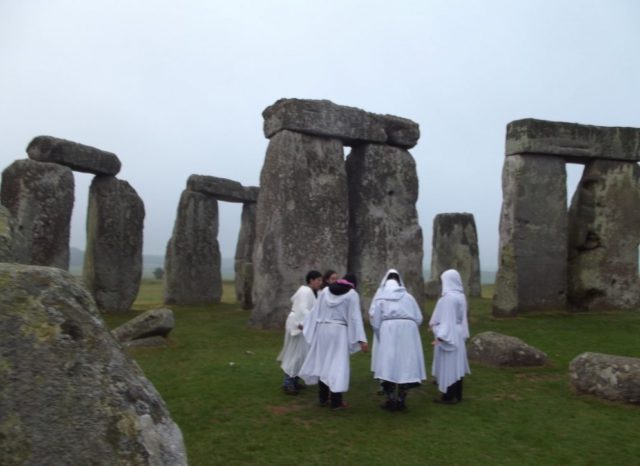
Cristina Boros March 12, 2018 18 Comments
Legends , Science Theories
Strange places, many secrets, unsolved mysteries are in every corner of our planet. Today I will tell you about the Mystery of Stonehenge and is up to you what you believe, how you see this monument. Only if you think the way was built this monument it is an unanswered question. How and who built the Stonehenge?Is it a time portal or just an an ancient site with an astronomical purpose ?
When Where And How?
Stonehenge is located in Salisbury, on a plain plateau with no forest or town nearby. Two concentric circulars of stone pillars are rising from these plains/ The heaviest one weight around 150 tones. These stones were brought there from a distance of 500 miles away by an ancient culture.
The first stone was brought there around 2600 B. C from the west wales. There were blue stones. Two hundred years later the blue stone circle was taken down and put in the center on the stone ring showing that they had a symbolic importance.
Then, another circle of blue stone was added and closed the whole monument. 4000 year Stonehenge was neglected, declining. Until in the 1950s when archeoastronomers discover it and start to study it.
There is question nobody found the answer yet. How this Neolithic civilization could bring so heavy stones from such a big distance?What technology they had?
One theory says that these stones were transported by water and that on the land by a log roller system, direct to the Stonehenge. But anyway, with the technology they had at that time nobody could find any evidence to prove this theory or a way to show how was done.
Looking how difficult was and what technology was required for the transport of the stones and building of the monument, some think that a civilization or a group of people which had high building knowledge came there helping and organizing the local primitive communities and passed them their skills.
Each stone fits into the other with precision and what is unique is that horizontal stones engineered so they were flat and formed arches and the stones were shaped into flat block. This couldn’t be done by a Neolithic civilization, without metal, without technology.
Scientists think that this monument was a solar calendar but also an eclipse predictor. It could predict events on the night sky, patterns’ on a century time scale.
This ancient civilization could track with the help of Stonehenge Venus, maybe mars and different phases of the Moon.
In the heart of Stonehenge is a heel stone which was lost and recovered after a while. This heel stone show the place where the sun rises on the longest day of the year.
What makes Stonehenge a Portal

Alfred Watkins in his book The Old Straight Track published in 1925 first mentioned the term lay lines. he claims that all the ancient sites were formed or constructed across the landscapes of Britain in a given alignment.
What was Stonehenge used for?
There are different opinions for the use of this ancient monument.
First we will start with its astronomical use. Stonehenge was as we said a solar calendar and an eclipse predictor. This Neolithic civilization had a culture believing in the Sun Worship and they built their monument related to this planet, this source of life and energy.
One way to explain this is the connection of the sto9nehenge with the river Avon and this connection aligns with the sun on the winter solstice. The monument also faces the summer solstice. Both these astronomical events are celebrated there today.

Talking about Stonehenge use Gaffney said in an interview for Live science;” It’s part of a much more complex landscape with processional and ritual activities That go around it.”
Stonehenge also had a burial use . A few decade sago, in Bavaria was something discovered that proved its burial purpose. Was an artifact from a very rich cast chief called nebra sky disk dating from the Olympic times.it was ceremonial artifact but had engraved constellations and sky patterns which show us the knowledge of astronomy that this Neolithic civilization had.
So these monuments is possible was a burial place for the important persons of that time. Scientists analyzing the bone fragments found at Stonehenge, they reveal they were buried 3000BC. They also found a bowl and a mace head used to burn incense. This show maybe that the people buried had a political or religious role in the community.
Other archaeological discoveries proofs that there was settled a community, a large number of houses.Stonehenge was maybe part of a larger ceremonial complex. The River Avon maybe was separated the world of living from the world of dead.
Now,another opinions about the use of Stonehenge is that it was a healing place .
Archaeologists Geoggrey Wainwright and Timothy Darvill in 2008 revealed that skeletons dating from the Stone age found at Stonehenge showed injuries and signs of illness and also a skeleton of a person comming from Switzerland ( today ) shows that people from long distances used to come to Stonehenge for its healing powers.
The blues stones were supposed to have those healing properties and was thought at that time that they were brought by some ancient civilization with healing knowledge. Small pieces of blue stones were made talismans from ancient people to protect them.
But finally,after so many researches nobody knows exactly what was the purpose of Stonehenge.
A myth or real story?
I will tell you a story and you will decide if is real or just a myth. It shows the mysterious power of this place.
Was in August 1971 when a group of hippies decided to camp there, to light a fire and spend a nice night., singing, smoking around the camp fire. About 2 am, a storm started from nowhere. A thunder crashed in the Salisbury Plain with bolts of light hitting the trees and the stones.
There were two witnesses which have seen the bolt of light striking the stones and both claimed that the stones light up with a strange blue light but they had to protect their eyes and didn’t look more. Both heard the campers screaming in fear but when they went there to help, expecting to find people injured but nobody was there. They found only some tent pegs and the remains of a campfire.
So what happened to the campers? maybe the postal opened with the help of the energy from the thunder and they were dragged in another world?
So… What is your own theory? What exactly is Stonehenge? Where did these campers disappeared? Where does its energy come from? I would really like to hear your thoughts.
Watch this video and tell me if you DO BELIEVE STONEHENGE IS A TIME PORTAL .
For further reading,more legends ,more videos,more information click below and you will find many interesting things

← Previous post
Next post →
18 Comments
Hey Cristina!
I love that place. My wife and I went on vacation to th UK a couple of years ago and visiting it was a must for us.
When we were approaching the location we started seeing the stones and got very excited.
But it was when we arrived to the circle that we started feeling a very warm sensation. Everybody was wearing coats and we had just a T-shirt on. We were like: What is going on?
We searched it and, as you say, the energy there is real and powerful! It’s not that we’re special or something, but we practice reiki and we both felt our hands on fire the moment we arrived there.
What I didn’t know is that it was a portal. That is really awesome!
Have you been there? Have you felt something similiar?
Loved the post! Thanks for sharing! 🙂
Did you really felt the energy? This is amazing. I read and research so much about but I didn’t go. I will soon. Can you tell more about reiki?
I think doing reiki you did open your mind, your aura ,you learnt to feel this things.
Yes, this energy that you felt,can create a portal to other dimensions. At least this is said.Would you pass through this kind of portal if you had the chance. There are more places on earth considered possible natural time portals.
You can click the link and see more about.
Have a good day and tell me more if you had other experience like this.
One of the biggest mysteries on Earth. How can we believe anyone or anything at all? So many different opinions
Never heard of the story you mentioned here, about the campers and how they disappeared. These are the exact stories that make my body freeze. It’s like watching a bad, a really bad thriller.
I will continue to believe that Stonehenge was a place for healing purposes and I’d like to visit it soon in the future with my family. I’ll make sure we’re going there as part of a group of people.
Yes, Tasos, i also believe was a place for healing but you have to think why had this power? maybe is true that the blue stones were brought from and ancient civilization with healing knowledge and powers? Shouldn’t be a bad thriller:) Maybe is a magnetic field, an energy source as they say and this is why happen things like this. You know even the healing can come from this.
I hope I will go also soon to visit it:) many people tell me that they really felt the heat when they visit the place. Is real its energy .If you will go tell me your impression and tell me if you felt anything.
Thanks for visiting and have a good day.
Hi Cristina
thank you for a great article about Stonehenge. I’m taking a holiday later this year to the UK with my children and this is on our must-see list! You have inspired me to find out more about the history behind it before I go. Do you know if there are visiting restrictions to protect this historical site? Regards, Megan
There are visiting restrictions on certain area. have a look here
https://www.londontoolkit.com/ …
I hope you will have a great time with your family and let me know if you felt its energy, You are welcome and anything you need just ask:)
Stonehenge is an amazing place and i will surely go soon. I just didn’t have the chance.
Thanks for visiting my site and stay close for updates.
Have a good day.
Great article on the mystery of stonehenge. For me Stonehenge is interesting, but it doesn’ intrigue me to wonder what the purpose is or how they managed to accomplish the great feat.
What does intrigue me about Stonehenge and wonders of the world is the fact that we somehow believe that we are smarter or more intelligent than people were in “ancient times”?
We aren’t any smarter today than the first people on earth; only technology has evolved not people. So when I think about Stonehenge like that, however they got it done just meant that someone sat and pondered on the idea until he came up with the first idea.
And to tell you the truth, I doubt if his first idea worked? But just like we would accomplish something today, they just kept on keeping on. Thanks Christina
Of course, nobody talked about smarter people…maybe more advanced civilizations? How they had such a technology to do those things like Stonehenge, PYRAMIDS….and other .You would think that thousands of years before you couldn’ t find the constructions Technics and the technology is today.
Thanks for reading my article ad see you soon for updates.
intriguing article Christina, I have been to stone henge many years ago now and it didn’t take long for me to recognise and feel the power of the place. We certainly have a lot to learn from out past but I get the impression that someone somewhere is trying to supress most of the ancient knowledge that could help us all now. Apparently there are older sites in Ireland similar to stone henge that pre-dates it. I had never heard the time travel stories though.
Hello Remy,
You really felt it? You felt the energy of this place? I agree with you many things are kept secret from us, many things thou are not yet understood. The ancient civilizations have still to much to teach us and to reveal.
Thanks for reading my post. I never have been at Stonehenge but i will soon.
Have a nice day,
I think it is important what you are talking about here.
A lot of people visit his place, and then walk away again without realizing the history and the importance of what it has to offer.
This is very interesting, as is all of your website. I had a good look around, and I love what you are doing.
Hello Chris, I agree with you, when you visit a place of such a historical importance you should know the story behind, not just look around.Now, about the legends related, the campers story and about why and how was built Stonehenge are many different opinions and of course each person is entitled to have his own thoughts and opinions about this monument.Thanks for visiting my site and I am glad that you fond it interesting. Have a nice day, Cristina
I have always wanted to visit Stonehenge! It is on the bucket list. This article and the comments make me want to visit more. I had never heard the campers story before. I would still camp there 🙂 As a very spiritual person, I think this is an ideal venture for me and my husband. Your site is very interesting in general. I bookmarked it. I love the articles. Thank you!
Thank you for reading and I hope you did enjoy my article. Indeed Stonehenge is a very interesting and mysterious place, and I have to be honest I didn’t visit it myself. I will very soon:) If you do go there, tell me if you felt its energy, how was the camping. The story of the campers is a strange and a very old story.Something created that energy field that night and still isn’t known until today what exactly was. Thanks for visiting and stay close for more updates. have a good day. Cristina
Like many others, it has been a dream of mine to one day visit Stonehenge. The story of the campers and the lightning storm at the end was very interesting! It does make one wonder how the structure was built in the first place, and why. It was a huge undertaking. What was the real purpose of the structure? Perhaps one day we will get the truth. Until then we are just left to wonder…and dream. Best wishes!
Hello Todd, I have to be honest are very different opinions about what was the purpose of building this ancient temple. Maybe non of them are true , maybe all.I also didn’t visit but i have it on my program:) i will soon. i am glad that you enjoyed reading my article and yes, the story is interesting.When you will visit Stonehenge let me know if you felt its energy, its power. have a good day, Cristina
I believe Stonehenge was a gathering place for ceremonial celebration of food, drink and procreation that could be precisely timed by the Henges orientation to both solstices !!! … children would all be born about the same time 9 months later and mature to adulthood at exactly the same time for expected mates to be of the same age (not too young or too old for making children) … the swiss skeleton proves people from far and away came to experience the revelry and probably brought new technology and items to trade or barter … lapis-lazuli (bluestones) of which the Hebrew 10 commandments were carved are a translucent stone probably brought in to the area from far away by traders to augment the dramatic effect to all that observed the colossal structure … I would love to travel back in time, keep my modern knowledge and still blend in and speak the ancient Gaelic with the crowd !!! would be awesome !!!
Thats wonderful information. Thansk for sharing it:) And, Robert i am really loooking forward to hear more:)
Leave a Comment Cancel reply
Your email address will not be published. Required fields are marked *
By using this form you agree with the storage and handling of your data by this website. *
By continuing to use the site, you agree to the use of cookies. more information Accept
The cookie settings on this website are set to "allow cookies" to give you the best browsing experience possible. If you continue to use this website without changing your cookie settings or you click "Accept" below then you are consenting to this.

The Stonehenge Calendar: A Prehistoric Approach to Time’s Passing
- Read Later
Readers will probably know that Stonehenge’s design highlights the longest and shortest days of the year, but it is not always understood that its strange configuration was designed to enable every day and every month in the year to be counted and tracked by its resident timekeepers. The passage of time was very important to prehistoric people. Farmers needed to be able to identify propitious days for sowing, harvesting, trading and religious festivals. As the Old Testament said: “To everything there is a season, and a time for every purpose under the heaven.” Located at the meeting point of ancient trackways, the Stonehenge calendar was as important to the time regulation of prehistoric England as Greenwich time is today.
When Stonehenge was constructed in its final form around 2,500 BC there were no clocks or watches as we know them, but the universe provided methods for calculating and monitoring the cycles of the year through the movements of sun, moon, stars, and planets. Few if any other stone circles were primarily designed as calendars, but Stonehenge surely was.
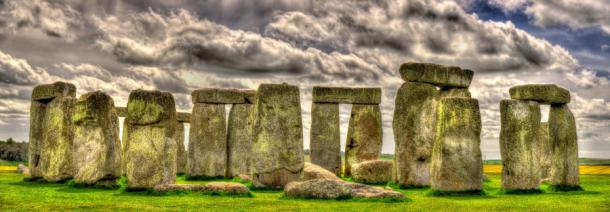
The famous standing sarsen stones at Stonehenge form a key part of the Stonehenge calendar, which marked the passage of the seasons in prehistoric times. ( Leonid Andronov / Adobe Stock)
The Thirty Large Sarsen Stones of the Stonehenge Calendar
It is not a coincidence that thirty large sarsen stones were erected in a circle at Stonehenge. These represented the thirty days in each lunar month and the thirty stone lintels which connected them represented the thirty nights of each lunar cycle. Stonehenge timekeepers presumably moved a marker (boulder, carving or seasonal offering) each day around the circle to count out the days of the lunar month. The moon’s cycle of 29.53 days also mirrored the female human fertility cycle. The stone Stonehenge calendar circle reflected the shape of the sun and the full moon and the recurrent nature of seasonal time.
Within the circle five trilithons, or freestanding doorways, were erected each consisting of two vertical boulders with a stone lintel joining them across their top ends. These trilithons were arranged in the shape of a horseshoe, open-ended towards the north-east avenue of Stonehenge. At midsummer dawn the largest central trilithon received the sun’s rays which shone down the approach avenue and passed between two “heelstones” (96 and 97).
- Everything Changes at Stonehenge as Pivotal Theory is “Totally Destroyed”
- Outline of missing stones appear at Stonehenge, proving stone circle was closed
In ancient times the Earth Mother was regarded as a female deity who progressed each year through the four stages of maiden, mother, queen, and old woman. The Earth Mother was deemed to be fertilized by the Sky Father who seemed to enter her every night.
This simple belief survived into modern times. In the nineteenth century Sitting Bull is credited with these words: “Behold, my friends, the Spring is come, the Earth has gladly received the embraces of the Sun, and we shall see the results of their love.”
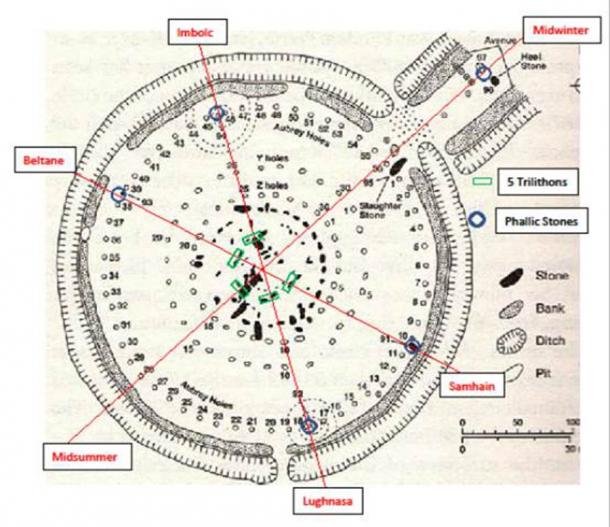
The four lesser trilithons of the Stonehenge calendar were probably identified with the four seasons in an anticlockwise direction: Imbolc being the northern trilithon, Beltane the north-western one, Lughnasa the southern trilithon and Samhain the south-eastern one. (Author provided)
The Sun God’s Phallus and the Earth Mother’s Vulva
It is generally agreed that at Stonehenge the Sun God’s phallus was represented by the Heel Stone(s). The Stonehenge trilithons represented the Earth Mother’s legs and vulva. A shaft of sunlight coming along the Avenue and penetrating between the uprights of the Great Central Trilithon therefore indicated fertilization of the whole Earth Mother at midsummer. The Sun God himself would be renewed six months later at the midwinter solstice as a result of this impregnation .
The four lesser trilithons represented the Earth Mother in her seasonal forms of maiden, mother, queen, and old woman (spring, summer, autumn and winter). Each of these was served by one of four other phallic stones (91, 92, 93, 94), which stood just inside the circular bank surrounding the stone Stonehenge calendar . Only one is still visible and it has fallen over. The other three are represented by a stump and two stone-holes which have been excavated. The diagonals of the rectangle formed by these four stones intersect at the center of the circle. The four smaller trilithons were set up to straddle these diagonal lines. The four corners of this rectangle may have served as sighting points when the trilithons were first erected, but they were probably also regarded as phallic servants of the goddess in each of her seasonal forms.
Sir Norman Lockyer established that at sunset during the first week in May the northwest phallic stone (93) would have cast a haloed shadow through the northwest trilithon, the center of the circle and the southeast trilithon. Conversely in early November the rising sun would have cast a shadow over the south eastern phallic stone (91) in the opposite direction. The dates of the Beltane and Samhain festivals were thus indicated. And the February and August dates for the other quarterly festivals of Imbolc and Lughnasa were fixed by alignment of pillars 92 and 94 through trilithons on the other diagonal of the rectangle. The four lesser trilithons were probably identified with the four seasons in an anticlockwise direction: Imbolc being the northern trilithon, Beltane the north-western one, Lughnasa the southern trilithon and Samhain the south-eastern one.
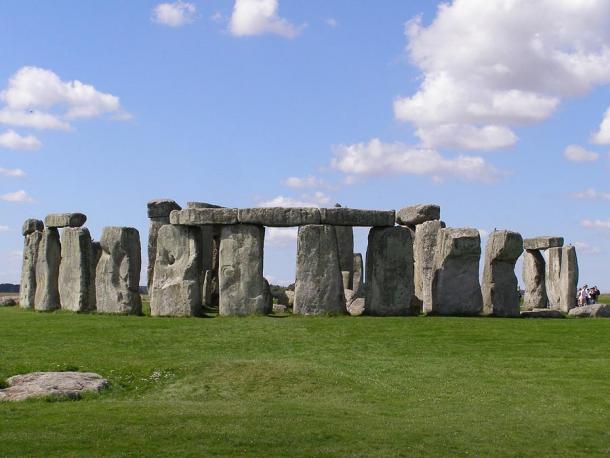
There are twelve full lunar months in every year and these twelve months are represented in the Stonehenge calendar by the twelve standing sarsen stones. (garethwiscombe / CC BY 2.0 )
The Twelve Lunar Months Represented By 12 Sarsen Stones
There are twelve full lunar months in every year and these twelve months are represented at Stonehenge by the twelve sarsen stones which are assembled in groups of three to form the four lesser trilithons. Stonehenge timekeepers would have used another marker or seasonal offering to highlight the current lunar month, moving this along at monthly intervals.
The key units of time measurement in all calendars are years, months, and days which unfortunately do not mathematically relate exactly with each other. This has led to a variety of methods for calibrating the year and its seasons. The Stonehenge peoples’ revolving year consisted of twelve lunar months, each of thirty days plus five “intercalary” festival days (six in a leap year). This kept their 360-day lunar calendar synchronized with the sun’s 365.242-day year.
- “Stonehenge Lego” Proves The Original Had Awesome Acoustics
- The Where, When and How of Quarrying Stonehenge 'Bluestones' Is Revealed in New Report
From earliest times a 360-day lunar calendar was used by the majority of ancient peoples, including the Egyptians, Assyrians, Babylonians , Hebrews, Armenians, Greeks, Romans, Indians, Chinese, Aztecs, and Mayans. The main reason for this choice was that 360 days can be divided into twelve equal months of thirty days which correspond roughly with the moon’s 29.53-day periodicity. Some cultures sub-divided each month into three equal periods of ten days known as “decans”. Small groups of stars associated with each of the 36 decans were painted on Egyptian tombs and coffin lids from 2100 BC. Stellar constellations were also used to identify and name the twelve months of the zodiac. Angles to the horizon were and still are divided into 360 degrees and we count 3,600 seconds in every hour. The tradition of dividing the year into four seasons is very ancient and a 360-day year divides neatly into quarters of three months or 90 days.
The five or six intercalary days were sometimes added at the end of each year (as in Rome), and this may have been the method used at Stonehenge. However, the fact that there were five trilithons suggests an alternative method of dealing with these uncounted days. One uncounted day may have been interposed at each quarter day and one (or two in leap years) at midsummer/midwinter. This would account for the tradition of holding a festival holiday at the start of each quarter - in addition to the midwinter/midsummer festival(s).
The problem of reconciling solar with lunar cycles is still apparent in the variable date assigned by Christians to their Easter festival. This date is determined as the first Sunday after the full moon falling on or after 21st March.

How the lintels were raised to form the top link between sarsen stones. (Author provided)
How were the Stone Lintels Placed on the Sarsen Stones?
The stone lintels that topped the standing sarsen stones were probably hauled up a temporary timber ramp, which was later removed. It is likely that the weight of these lintels pressing down on the ramp and its timber supports were responsible for the two circles of depressions in the soil which are now known as the “Y” and “Z” holes.
The purpose of the circular bank surrounding the complex also requires explanation. Long before the sarsen complex was erected a pole had been driven into the center of the circle and a long leather thong attached to it was then used to mark out two concentric circles of about 86 (282 feet) and 92 meters (302 feet) in diameter, respectively. Substantial posts fixed in holes up to one meter (3.3 feet) deep were located along the circumference of these two circles at regular intervals of about five meters (16 feet). There were 56 posts in the inner circle and a similar number in the outer ring.
These two circles of posts were then connected by substantial timber lintels to form two strong rings. The inner ring of lintels was perhaps about three meters (10 feet) above ground level and the outer ring stood about two meters (6.6 feet) high. Rafters sloping outwards rested radially on these beams to support a roof made from hides, thatch or turf. This provided a framework within which about 56 “apartments” could easily be created (each about five by three meters or 16 by 10 feet), probably using woven hurdles of wattle.
These “apartments” provided accommodation for the Stonehenge timekeepers and their families. This residential function ceased either when the tribe outgrew the circle and moved to larger living accommodation at Durrington Walls and Woodhenge two miles away, or when timekeeping activities ceased. There was plenty of domestic waste in the Stonehenge ditch to indicate that people lived there at one time.
In an early version of “wattle and daub” construction, soil was piled up against the outer wall of the circle to form a protective sloping bank about two meters (6.6 feet) high and six meters (20 feet) wide. In the process a substantial ditch was created which helped to keep the apartments dry. The ditch also served as a communal latrine, accessed through a gap in the circular bank. The occupants of each apartment may have been responsible for the construction of their own quarters, which accounts for minor variations in their dimensions. British archaeologist Aubrey Burl commented that the ditch was not exactly circular but “consisted of a polygon of about 60 straight-sided segments.” This was because the bank and ditch followed the straight back wall of each apartment.
The bank and ditch are still visible today. The inner circle of postholes (known as the Aubrey holes) has been excavated. The outer circle of postholes (now concealed under the collapsed bank) seems to have escaped the attention of modern archaeologists, but William Stukeley’s unpublished 1719 plan of the Stonehenge “Avenue” clearly shows the two concentric circles of postholes.
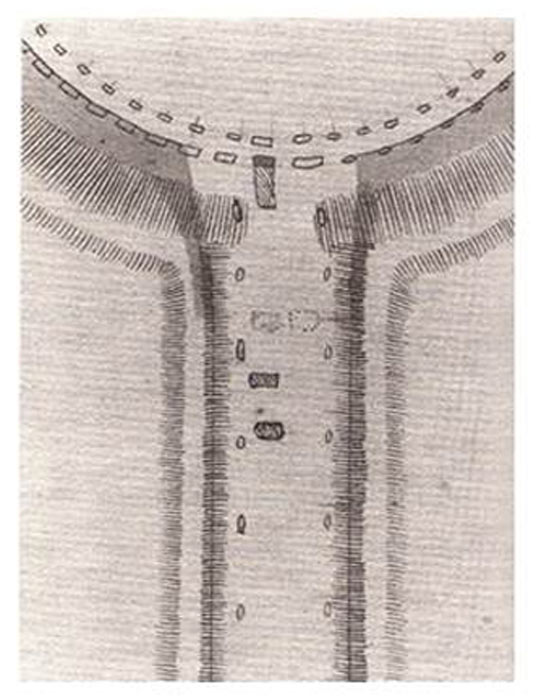
A diagram of an Aubrey hole, which were also a place where charcoal from adjacent cooking fires and cremations spread over time. (Author provided)
The Aubrey Holes and When The Posts Were Removed
The Aubrey holes have sometimes been described as “cremation pits” but evidence to support that theory is weak. R.S. Newall, who had examined many of the Aubrey holes in 1921, wrote in his 1950 guidebook that most of the “cremations” were not in compact masses deep in the holes as might have been expected, but had been placed quite shallowly at the sides of the holes and had “dribbled down to the bottom.”
Rather than cremation pits it seems likely that ash or charcoal from adjacent cooking fires and cremations had spread out over time and drifted down mixed with soil into the Aubrey holes when their posts were removed. The posts were perhaps redeployed as rollers when the Stonehenge timekeepers hauled enormous sarsen stones to the site. Some archaeologists think that these posts were originally the bluestones which had been laboriously dragged from the Prescelli mountains in South Wales and that were later repositioned within the sarsen complex.
The first group of hunter-gatherers had come to Stonehenge between 8,000 BC and 6,000 BC. Finding plenty of red deer, wild boar, and aurochs they made camp there, digging a large hole about 1.5 meters (5 feet) deep and a meter (3.3 feet) in diameter. In this hole they erected a substantial pine trunk which supported a latticed “maypole” roof anchored to a circle of boulders. When the central pole rotted after some decades the group simply dug a new hole, erected a new tree trunk, and danced under a new “maypole” roof.
Boulders used to anchor the guy ropes of their tent were doubtless redeployed. This cycle was repeated several times over the centuries that followed. Four of these “maypole” post holes carbon dated to 6,000 BC have been found in the former Stonehenge car park, and similar Mesolithic post holes have been found elsewhere. The holes in the old Stonehenge car park are not exactly in a straight line and carbon dating tells us that they were not precisely contemporaneous.
We know from bones excavated at Stonehenge that the tribe were meat eaters, chiefly beef and venison. These animals roamed on Salisbury Plain and were managed by the tribe. Control and capture of half-wild animals is not easy, but Stonehengers used the same simple methods as those employed by farmers everywhere.
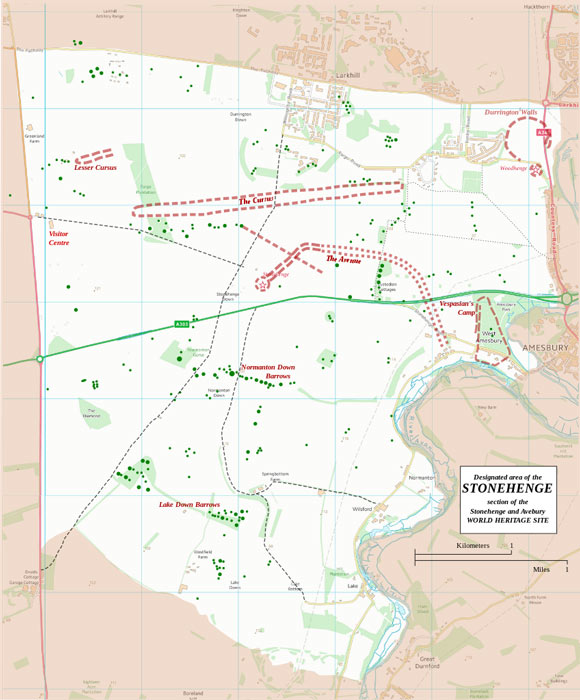
The layout of Stonehenge showing the Avenue. (Crown copyright / OGL 3 )
Stonehenge Avenue Transitions to Woodhenge and Durrington
Leading from their circular enclosure the later Stonehengers had raised a bank with fencing or hedging which ran north-east beside the “Avenue” in a straight line from their home for about five hundred meters (1,640 feet). A small group of hunter-farmers could easily drive animals into the angle formed between this hedge and their circular bank. There was a gap between the end of the straight fence and the circular bank where a gate led into a small pen in which animals were probably confined before being killed, flayed, gutted, and roasted for all to share. Burl describes posthole evidence of the stockholding pen as “a puzzlement” for which he can offer no satisfactory explanation.
- A Missing Piece of Stonehenge Is Returned and Could Answer Big Questions
- Megalithic Examination Explains Why Stonehenge was Built on Salisbury Plain
Over some four centuries the Stonehengers flourished and increased in number until their condominium became seriously overcrowded. It could not readily be enlarged and so overspill settlements were started two miles away which developed into a great circular timber clan house which we now call “Woodhenge,” and “Durrington Walls.”
At Durrington Walls a deep ditch and mile long outer bank surrounded the new tribal residential stronghold which contained many substantial circular timber buildings. Now the tribe had space to further increase and multiply and eventually all residents moved there from the Stonehenge site.
But the tribe did not forget their ancestral home which now became a place of pilgrimage and veneration. Their priest-timekeepers presumably attended daily to update the magnificent stone calendar-temple which they had built there. And the whole tribe probably made pilgrimage to their ancestral home along the ceremonial Avenue for the solstices and quarterly festivals.
Top image: Understanding the Stonehenge calendar is easy if you follow Stephen Childs’ thinking in this article and in his book “Stone Circles Explained.” This image shows sunrise at this ancient site. Source: Gail Johnson / Adobe Stock
By Stephen Childs
“ Stone Circles Explained ,” by Stephen Childs, offers some original theories regarding the purposes of stone circles. It is published through Amazon and Kindle and is summarized on YouTube at https://youtu.be/bwiD7NTzJGc
There is another calendar that can be created using the Aubrey holes. Joan Rankin (who is sadly no longer with us), used the astronomical values that astronomers use to measure time to create a calendar from the Aubrey holes.
In my work I also discovered that the size of the stone circle relative to the size of the earthwork marks the size of the moon and the Earth. The thickness ot the stone lintels also matches the change in the size of the moon at apogee and perigee (which are the closest and furthest points from Earth).
The same data is found in Pictish texts, in the Invereen Stone, and in the Durrington Walls circle.
These astronomical links are discussed in The Map That Talked.
If you have any quesitons I will be happy to answer them.
Best regards
Dr. Derek Cunningham Author of: The Map that Talked - How astronomy was used to map the ancient world The Babel Texts - Decoding the early text of the Stone Age Scotland and Shakespeare's Third Prophecy - Recovering Scotland's Forgotten past

History, philosophy and religion have simply been lifelong hobbies for Stephen, which he has researched and mulled over for many decades with conclusions that do not always accord with popular theories. Some of these explorations have culminated in the book... Read More
Related Articles on Ancient-Origins
- Skip to main content
- Skip to primary sidebar
- Skip to footer

How To Visit Stonehenge in 2024: Tickets, Hours, Tours, And More
Eddie Saint-Jean Last Updated: March 26, 2024
Stonehenge is one of the UK’s most popular archaeological attractions. Planning to visit this amazing site, however, can get a little overwhelming. If it’s on your bucket list, we’ll make things a lot easier for you! In this guide, find out how to visit Stonehenge from how to get tickets to traveling to the site, tours to take, and a brief history.
Pro Tip: Planning what to do on your trip to London? Bookmark this post in your browser so you can easily find it when you’re in the city. Check out our Stonehenge guide for more planning resources, our best Stonehenge tours for a memorable trip, and the top things to do in London .
Visiting Stonehenge: What We’ll Cover
Stonehenge is an iconic ancient landmark on the Salisbury Plain in England. The mystifying stone circle has baffled experts for many years. Attracting droves of visitors every year, you are not alone in wanting to tick this site off your bucket list. However, getting there isn’t straightforward. In this guide, find out what you need to know to visit Stonehenge. Here’s what we’ll cover:
- Opening hours and tickets
- How much time to budget for your visit
- How to get there
- What to see in Stonehenge
- Guided tour options
- Facts and history of Stonehenge
- Places to eat nearby
Stonehenge Opening Hours and Tickets
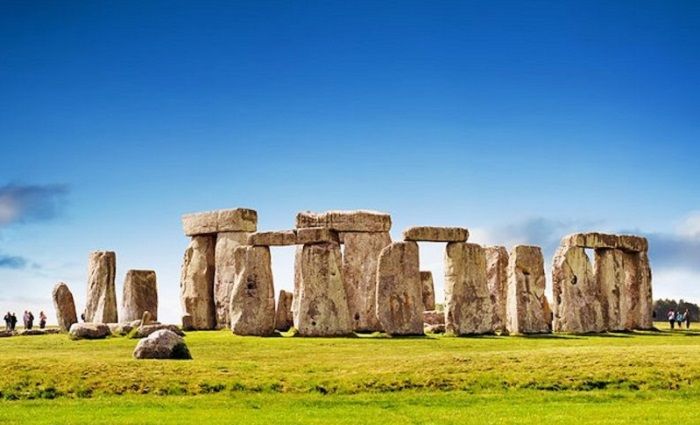
Opening Hours:
Stonehenge is open seven days a week, 9.30 am to 5 pm (9.30 am to 7 pm in June, July, August). You can gain entry every day throughout the year apart from Christmas Day.
There is different pricing for peak, off-peak, and standard tickets. As you’d expect, peak time is the most popular time, so it’s the most expensive. Therefore, off-peak (Monday to Friday) has the cheapest tickets because of the lower demand during the working week.
Off-peak: Adults £22, Concessions £19.80, Children £13.20 Family Admission £57.20.
Standard: Adults £24, Concessions £21.60, Children £14.40, and Family Admission £62.40. Typically, the weekends in the low season and weekdays in the months of June, July, and August are standard-priced
Peak: Adults £29, Concessions £26, Children £18, and Family Admission £76. Typically, the weekends in June, July, and August are peak-priced.
And finally, advance booking is not a necessity. However, you are more likely to get a cheaper price and guaranteed entry if you do so. Note: the prices given above are the cheaper online prices. The last time to buy tickets at the Stonehenge site is 4:30 pm during the summer season (June, July, and August) and 2:30 pm in autumn, winter, and spring.
Pro Tip: Stonehenge can get very busy between 11 am and 2 pm and on bank holidays. So those who want some peaceful time for reflection at the historic monuments should visit at other times.
Not ready to book a tour? Check out our best Stonehenge tours to take and why .
How Long To Spend at Stonehenge
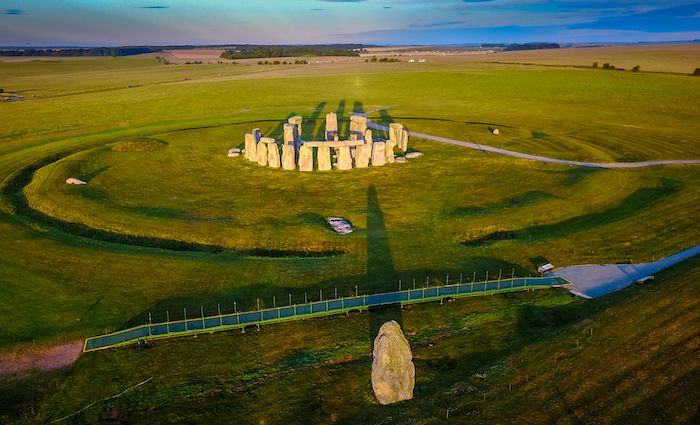
Short Answer: about 5.5 hours
Stonehenge is 90 miles away from London and it takes 1.5 – 3 hours to travel from London to Stonehenge, depending on your method of transport. You’ll also need 2.5 hours to spend on the archaeological site.
How To Get To Stonehenge
A bus/coach can take up to 3 hours to get to Stonehenge and they leave from Victoria Coach Station (London) any time after 6 am. Alternatively, we offer an attractive tour option with transportation included along with stops at Windsor Castle and the city of Bath.
There’ll be no visitor queues for you during this day trip, and you’ll have an expert guide at hand. You get to learn about the historic castle residence of the British royals and also the Roman baths that gave Bath its name.
There is no direct bus or train to Stonehenge, so our Stonehenge tour options will cut out a lot of the travel hassle that you’d experience with trains or rented cars. If you still wish to travel by train, Stonehenge is on Salisbury Plain in the county of Wiltshire, so you can take a direct train from London Waterloo to Salisbury station.
Regarding train frequency, expect two to three an hour and the journey takes 1 hour 30 minutes. However, Salisbury station is 9 miles away from Stonehenge so you must factor in an additional cab or bus to the site.
Rented Car:
Those who want to travel by rented car must consider London’s heavy traffic and its congestion charges which may make that option less attractive. Also, in England cars are right-hand drive and move on the opposite side of the road to many countries, so that may also be a little confusing.
We’d only advise renting a car if you are going to explore the English countryside for several days, then it will be quite handy and cost-effective. The journey to Stonehenge can be as fast as 1 hour 40 minutes or as long as 2 hours 30 minutes depending on traffic.
Getting there from the Visitors’ Center:
On arriving at the Visitors Center on your own, your booking details will be checked at the admissions point. You can then view the center’s interactive exhibits and artifacts and then visit Stonehenge or vice versa. You then need to catch a shuttle bus to the site. They are quite regular and the journey takes 5-10 minutes.
Alternatively, you can walk from the Visitor Centre and explore the National Trust’s ancient landscapes. Along the way, you will see other amazing prehistoric monuments including Bronze Age burial mounds. Also, there are information panels with further details about the monuments and sites that lie ahead.
Moreover, you can obtain a Stonehenge walkers’ map from the Visitors Centre with info on the walking routes and key points along the way. The walking distance from the Visitor Centre is 2 kilometers (1.3 miles) and will take you 20-40 minutes.
Pro Tip: You are advised to travel lightly, without much luggage. This is because once you get to the Stonehenge site there isn’t a cloakroom or anywhere to keep luggage. And remember, you can stay as long as you like at the site but have to return to the Visitors Centre by the 5 pm closing time.
What To See at Stonehenge
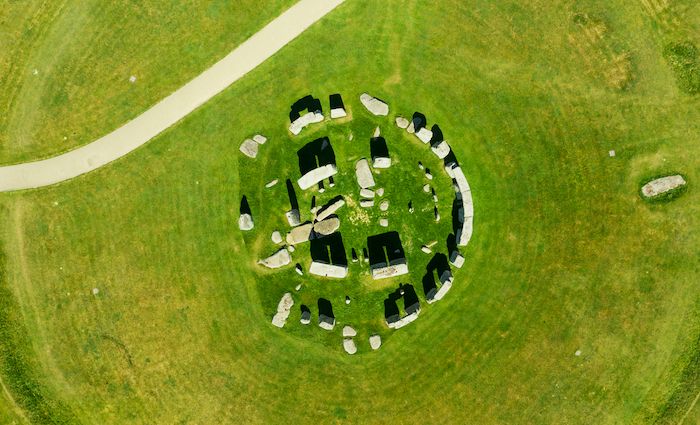
You could easily describe Stonehenge as a “bunch of rocks in a field” because that is what they are, but the experience is actually surreal. This is especially the case when you know what to see and the story behind them . Here are some of the things you should look out for while visiting:
- Stonehenge Stone Circle
- Stonehenge Exhibition (Visitor Centre)
- The Landscape Walking Trail
- Bronze Age Burial Mounds
- The Cuckoo Stone
- Durrington Walls (Henge Monument)
Stonehenge Tour Options
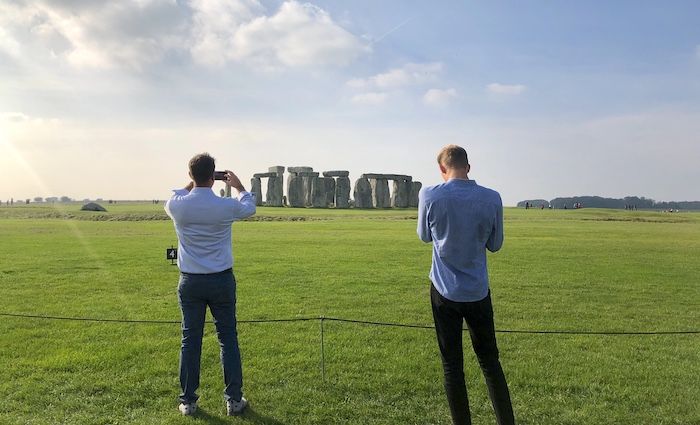
If you’re planning a trip to Stonehenge, our guided tours are an attractive option. You can learn more about these prehistoric monuments and their World Heritage Site status from our knowledgeable local guide. It will certainly make your Stonehenge experience that much more special. Here are some of our most popular Stonehenge tours.
Windsor Castle, Stonehenge, and Bath Day Trip from London (12 hours)
A trip down ancient history is just what you need while in London for a few days. Let us take the hassle of arranging transportation and tickets while you sit back and relax on this day trip from London.
You’ll hit up the top sites for British, Druid, and Roman history within a few hours of the city, thanks to your driver-guide who loves sharing these sites with travelers. A visit inside Windsor Castle, time to explore Stonehenge, and free time in the city of Bath where you can choose your activity will round out your full-day trip.
See tour itinerary, price, and description

Early Access Stonehenge Morning Tour from London with Inner Circle (9.5 hours)
Early birds, unite! This early morning trip to Stonehenge from London is ideal for those who want to see these ancient ruins under the soft light of dawn. Leave the driving to a local guide who can also provide your early access tickets to see this monument before the general public. Also included is a stop at the Salisbury Cathedral where you’ll find the tallest spire in the United Kingdom and an original Magna Carta.
After Hours Stonehenge Inner Circle Tour from London (11 hours)
If you’re interested in more ancient ruins outside of London than just Stonehenge, then check out this tour! You’ll start your day trip from London with a local driver-guide who’ll take you to the manmade mound called Silbury Hill and the nearby 5,000-year-old burial grounds. Stops at Avebury to see a mini Stonehenge and the supposedly haunted Red Lion Pub are up next before heading to Stonehenge at sunset.
Facts and History of Stonehenge
- It was first built over 5,000 years ago during the late Neolithic Age. The structure we see today is the result of additional henge structures erected over thousands of years with the last stone added in 1,500 B.C. (early Bronze Age).
- The stone circle in the middle of the henge landscape was built in 2500 B.C.
- Stonehenge has an unusually high number of prehistoric monuments.
- The stone circle is made of very large sarsen stones (weighing 25 tonnes) and smaller bluestones (2 to 5 tonnes). Because of the size of these stones, it is regarded as an unbelievable feat of engineering that prehistoric Britons were able to erect a structure such as this.
- Archaeologists believe the sarsen stones were transported on wooden sleds from a rocky area 32km away. However, the nearest bluestones are in Wales, a country in the U.K. that’s 225km away from Stonehenge.
- There are many theories about its function. English Heritage claim the structure marks the movements of the sun, perhaps for farmers to map the cycle of the seasons. But many leading British archaeologists say it was a place of healing—an early ceremonial stone hospital. Furthermore, it’s been proven that during the Bronze Age it was used for funeral ceremonies.
- In 1986, Stonehenge was made a UNESCO World Heritage Site.
Places To Eat Nearby
Stonehenge is set in a secluded rural heritage site on Salisbury Plain, so there are few restaurants and cafés in the immediate area. However, you will inevitably need to eat, so here are a few places nearby to get something to eat. For more options, see our article on the best restaurants near Stonehenge .
Stonehenge Visitor Centre Café : ££ | Quick Snacks —As you’d expect, this is the closest eatery to the stone circle site. Their food is locally produced and includes many light snack options such as soups, hotspots, sandwiches, sausage rolls, and salads. Vegetarians are also catered for.
Stonehenge Inn : ££ | Pub —The Stonehenge Inn is a good choice because it offers greater food variety and a better atmosphere than the other restaurants and cafés closer to the site. Also, you get to see their delightful mini replica of Stonehenge. They have a pub food menu for both adults and children. Some dishes have henge-themed names like The Dunken Druid, Messy Mesolithic, and Messy Druids Burger.
Larkhill Café : ££ | Breakfast —Great place for breakfast or brunch with lots of both sweet and savoury options. They have good coffee too.

Find the best places to stay
Where To Stay in London
Deciding where to stay at a great hotel in London can take some effort since it’s a massive city. Make your decision easier with our list of the best neighborhoods and hotels in London.

Reader Interactions
Leave a comment cancel reply.
Your email address will not be published. Required fields are marked *
- Travel Guide
- In The Press
POLICY & TERMS
- Cancellation Policy
- Terms & Conditions
- Privacy Policy

Protect Your Trip »
The 8 best stonehenge tours from london.
Stonehenge tours from London are a popular and easy day trip.
The Best Stonehenge Tours

Getty Images
Stonehenge poses more questions than answers, making it one of the most mysterious prehistoric monuments in the world. And because of its proximity to London, the famous landmark makes for a popular day trip from the city . Organized Stonehenge tours from London typically include round-trip transportation in an air-conditioned coach, as well as visits to other nearby landmarks, such as the Avebury stone circles, Bath or the Cotswolds.
These tours from London, evaluated by U.S. News using both expert opinion and traveler sentiment, offer some of the best ways to experience Stonehenge.
The English Bus – Stonehenge, Bath & A Secret Place
Price: From 134 pounds (around $170) per person Duration: 12 hours
For adventurous travelers who want to see Stonehenge and Bath, and don't mind a little mystery, The English Bus's full-day tour offers both. Limited to 16 people, the tour departs from London in a Mercedes minibus, complete with panoramic windows and a glass roof. As you drive through the countryside, you'll enjoy live, in-depth commentary from your expert guide before arriving in Stonehenge. After exploring Stonehenge, you'll head to Bath to enjoy lunch and time to roam on your own or join an optional guided tour. Your final stop is a "secret" destination selected by your tour guide. Reviewers praise the knowledgeable, humorous guides and particularly recommend this tour for its small size and luxurious transportation.
Tours depart from central London daily. Ticket pricing does not include food or Stonehenge tickets. You can buy entry tickets to Stonehenge on-site for about 20 to 25 pounds (around $25 to $31) depending on the time of the year when visiting or online in advance for a slight discount. Other tours offered by The English Bus visit the Cotswolds, Canterbury and more.
Check prices & availability:
Premium Tours – Windsor Castle, Stonehenge, Lacock, Bath and 14th Century Pub Lunch
Price: Adults from 149 pounds (about $189); kids from 139 pounds (about $175) Duration: 13 hours
You'll be among the first visitors of the day to step inside Windsor Castle – the largest continuously occupied castle in the world – on this daylong tour. Other highlights include lunch in a 14th-century pub in the charming town of Lacock, a walking tour of Bath and, finally, the day is capped with a visit to Stonehenge. Though most tourgoers were happy with the trip (especially the patient, organized guides), they do warn it makes for a long day and wish they had extra time at certain attractions. The tour (which runs daily) leaves London at 7:45 a.m. (from Victoria Coach Station) and returns around 9 p.m.
Lunch and admission tickets to attractions are included. Ticket options that do not include entry or lunch are also available for a lower price. Premium Tours also offers excursions to Leeds, Canterbury and Greenwich, among other locations.
Check prices & availability:
Evan Evans Tours – Windsor Castle, Stonehenge & Bath
Price: Adults from 142 pounds (about $180); kids from 132 pounds (around $167) Duration: 11 hours
In addition to Stonehenge, this 11-hour bus tour stops at Windsor Castle and the historic city of Bath, where you'll be given the choice to explore freely on your own or visit the world-famous Roman Baths. Reviewers praise the guides, who they describe as humorous and fun, and say the tour is jampacked, but well-paced.
Tickets do not include Stonehenge entry and are available for a lower price. Evan Evans Tours operates a variety of trips outside of London to destinations like Oxford and the Cotswolds, in addition to tours within the city.
Golden Tours – Stonehenge and Bath Tour
Price: Adults from $183; kids from $170 Duration: 10.5 hours
Ideal for tourists with a dual interest in the city of Bath and Stonehenge, this approximately 11-hour tour offers access and expert insight into both UNESCO World Heritage Sites. While in Bath, you'll take a guided walking tour of the city and visit its ancient Roman Baths and Pump Room. The second stop is Stonehenge, where you'll have time to explore the mysteries of this ancient Neolithic structure. Travelers rave about the excellent and informative guides, as well as the drivers.
Ticket options do not include entry to Stonehenge or the Roman Baths are also available for a lower price. Tours depart from London daily at 8:30 a.m. The company offers a variety of tours to destinations in and around London.

Anderson Tours – Avebury and Stonehenge Small Group Tour From London
Price: Adults from 109 pounds (about $139); kids from 99 pounds (about $125) Duration: 12 hours
The full-day Avebury and Stonehenge excursion with Anderson Tours picks up in London starting at 7:30 a.m. and makes its first stop at West Kennet Long Barrow – one of the largest Neolithic burial tombs in Britain. Here, participants have the chance to visit the burial chambers. From there, the group visits the medieval village of Avebury, home to the largest prehistoric stone circle in the world. After a guided walking tour of Avebury and free time for lunch and exploration, guides lead the way to Stonehenge, where tourgoers can explore the site at their leisure with the aid of audio guides (accessible via a free smartphone app). The group returns to London around 7 p.m. Visitors say the guides are excellent and they learned a lot.
Tours run Wednesday, Friday and Sunday. Anderson Tours also offers excursions to Oxford, Windsor and Canterbury, among other day trips.
International Friends – Stonehenge, Bath & Windsor
Price: Adults from 164 pounds (about $207); kids from 144 pounds (around $182) Duration: 11 hours
Travelers approve of this tour for its small group (up to 16 participants) and knowledgeable guides, who are well-versed in British history. On this approximately 11-hour journey, you'll visit Stonehenge, Windsor Castle and the city of Bath, where you'll have the choice to tour the Roman Baths or wander the ancient city for some sightseeing.
Tours depart daily; exact departure times from London vary by season. International Friends also offers "Harry Potter" tours and excursions to "Downton Abbey" filming locations, among other areas of the English countryside.
British Tours – Windsor, Stonehenge & Oxford
Price: From 1,310 pounds (about $1,655) for up to six participants Duration: 12 hours
Visit some of England's most famous landmarks with this private daytrip. Among the sites you'll see with your personal tour guide are Windsor Castle, Stonehenge and the University of Oxford. Travelers enjoy the tour and appreciate the guides' sense of humor and wealth of information. Plus, they appreciate that guides pick up patrons from central London hotels .
Prices range from 1,310 to 2,090 pounds (about $1,655 to $2,641). Prices do not include entrance fees or meals. British Tours offers a variety of other excursions from London, including day trips to explore Paris .
Premium Tours – Stonehenge Private Viewing, Lacock and Bath
Price: Adults from 143 pounds (about $181); kids from 133 pounds (approximately $168) Duration: 11 hours
If you want to experience Stonehenge without the crowds, consider this approximately 11-hour tour, which visits Stonehenge when it's closed to the general public. What's more, you'll tour the site's stone circle – an area most visitors only view behind a rope barrier. The day also includes a meal at a 14th-century pub in Lacock, as well as a stop in Bath. In Bath, you can join an optional walking tour to see highlights like the Jane Austen Museum, Pulteney Bridge and the Bath Abbey. Many reviewers call this tour the highlight of their London trips and highly recommend the evening tour if you'd like to see Stonehenge at sunset.
Travelers should note, there is also an option to buy a ticket that includes entry to the Roman Baths. Morning tours (available Mondays and Thursdays) depart at 5:30 a.m.; evening tours (which run Sundays and Wednesdays) depart at 11:10 a.m.
Stonehenge Tours from Bath

If you'll be staying in Bath during your visit to England and want to see Stonehenge, consider one of the following tours:
Mad Max Tours – Stonehenge, Cotswold Villages and Avebury Stone Circles
Price: Adults from 70 pounds (about $88); kids from 35 pounds (around $44) Duration: 9 hours
On this eight- to nine-hour tour, you'll board a bus from Bath to visit historic sites and towns around the English countryside. You'll stop at Stonehenge first ahead of the crowds for a two-hour visit. From there, the next destination is the Avebury stone circles and village. Then, it's off to the Cotswolds to explore a handful of small, charming towns; Lacock National Trust village is the designated stop for lunch. Patrons give the tour high marks and especially praise the visit to the Cotswolds villages. Others say the tour is well-paced. Tours depart daily from Bath beginning at 8:25 a.m.
This tour is not recommended for kids younger than 5. Tickets to Stonehenge are not included in the tour price; you will need to pay your guide for the tickets on the day of your tour. Mad Max operates several other outings, including a tour devoted solely to visiting the villages of the Cotswolds.
Bath Insider Tours – Ancient Britain Tour
Price: From 505 pounds (about $640) for two people Duration: 8.5 hours
On this daylong excursion, you'll join a local expert for an exclusive private tour (for up to six people in your party) that departs from Bath. Your guide – a lifelong Bath resident – takes you on an approximately 8.5-hour journey to explore sites near Bath, including Avebury, the West Kennet Long Barrow burial site and Stonehenge. The tour includes a stop at a traditional English pub for lunch. Patrons heap praise on the guide for his knowledge and good nature.
Tours depart daily at 9 a.m., but exact availability will vary. Pickup from central Bath, its hotels and its train station is included, as are admission tickets to sites. Lunch and drinks are not included in the cost. Additionally, keep in mind the cost per person will vary depending on the number of people in your party. Bath Insider Tours also offers private tours of Bath and other custom tours, including half-day excursions.
Frequently Asked Questions
Yes, you can visit Stonehenge without a tour. It is accessible to visitors year-round.
However, there are a few benefits to choosing an organized Stonehenge tour, including the commentary and knowledge tour guides are able to provide and the ease of a tour provider's transportation. Tour companies will typically pick you up in central London (usually multiple pickup points are available) and Bath and take you directly to the historical site; then provide return transportation back to the city at the conclusion of the tour.
Stonehenge is located in Salisbury, England, about 90 miles southwest of London. The train ride from the London Waterloo station to Salisbury takes about 1 hour and 20 minutes. After that, you can hop on a bus from the train station to Stonehenge, which takes about 30 minutes.
You might also be interested in:
- The Best London Tours
- The Best Things to Do in London
- The Best International Travel Insurance
The Most Famous Landmarks in the World

Tags: Travel , Tours , Great Britain , Vacations , United Kingdom Vacations , Europe Vacations
World's Best Places To Visit
- # 1 South Island, New Zealand
- # 4 Bora Bora
If you make a purchase from our site, we may earn a commission. This does not affect the quality or independence of our editorial content.
You May Also Like
The best things to do in maine.
Mariya Greeley and Nicola Wood April 10, 2024

The Best Pearl Harbor Tours
John Rodwan and Amanda Norcross April 9, 2024

The Best Pigeon Forge Dinner Shows
Korrin Bishop April 9, 2024

Flight Canceled or Delayed? What to Do
Amanda Norcross April 8, 2024

Carry-on Luggage Sizes by Airline

The Best Charleston Tours
John Rodwan April 4, 2024

The Best Napa Valley Wine Tours
Amanda Norcross April 4, 2024

The 10 Best Denver Tours
Lyn Mettler April 4, 2024

Top Memorial Day Weekend Getaways
Nicola Wood April 3, 2024

The Best Way to Renew a Passport
Amanda Norcross April 3, 2024


From London to Stonehenge: 4 Best Ways to Get There
Written by Bryan Dearsley Updated Jan 3, 2022 We may earn a commission from affiliate links ( )
Thanks to its size – you could literally fit it into the United States around 70 times – England is an easy country to tour. And for those planning to spend much of their time in the nation's capital, this is especially good news. England is crisscrossed by an excellent network of roads and rails, most of which either start in London or pass by close enough to make them handy for travelers.
Take Stonehenge as an example. One of England's top places to visit , Stonehenge can easily be reached by car, guided tours, or a combination of rail and bus transportation options. Best of all, the journey itself can offer many more great sightseeing opportunities, especially if you choose to have a tour company do the driving.
To help you plan your England travel itinerary, we've put together the following list of the best ways to get from London to Stonehenge.
On This Page:
- From London to Stonehenge by Tour
- From London to Stonehenge by Shuttle Bus
- From London to Stonehenge by Train and Bus
- From London to Stonehenge by Car
1. From London to Stonehenge by Tour
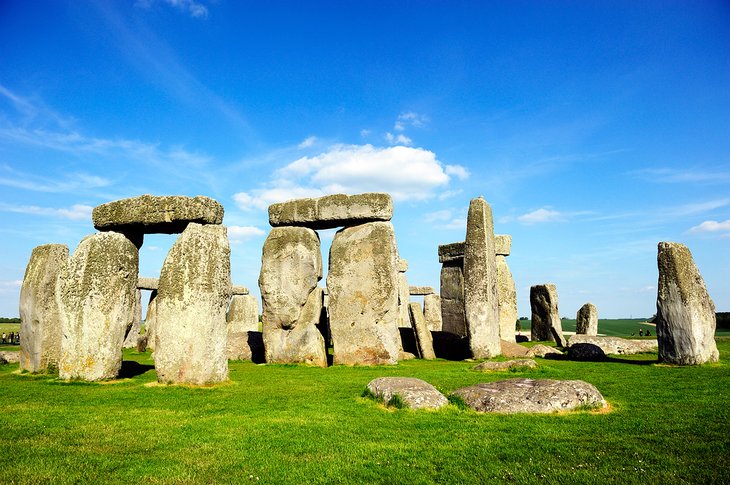
For those wanting to see multiple attractions while in England, an organized day trip from London to Stonehenge via Windsor Castle and including Bath is a great option. This superb day-long excursion lasts approximately 11 hours and manages to allow you to tick off three of the country's most popular tourist destinations in one go (albeit a long one!).
After an early 8am departure from the Victoria Coach Station in Belgravia, London, you'll kick things off with a visit to majestic Windsor Castle. Famous as the world's oldest castle still in use by royalty, much of it can be toured when there's no one home (check whether the flag is flying; it is when the Queen's home).
There's certainly much to see and do in Windsor Castle , so the hour and 15 minutes you get to spend here is pretty crammed. Rest assured, though, your professional guide will ensure you get to see the best bits while you're here. Highlights include famous St. George's Chapel (where Prince Harry married Meghan Markle), a tour of the State Apartments, as well as catching the colorful Changing of the Guard ceremony.
Next stop is the beautiful city of Bath in Somerset. You know you've arrived when you drive past famous Pulteney Bridge (so have your cameras ready). This most romantic of English cities is fun to explore, and you'll be provided with a chance to see top Bath attractions , including a 40-minute tour of the Roman Baths. As you head to your next destination, you'll also take a drive past Bath Abbey and those famous, elegant Georgian-era Royal Crescent townhomes.
Then, it's on to your final destination: Stonehenge in Wiltshire. Here, armed with the provided audio guide headset and interactive map, you'll learn not only how this magnificent 5,000-year-old structure was built, but also its cultural significance over the centuries. Your hour-long stop here includes entrance to the excellent Stonehenge Visitor Centre, along with the chance to buy some souvenirs.
In addition to audio guides and the services of a professional tour guide, this top tour of Stonehenge from London includes ticket admissions and transportation.
2. From London to Stonehenge by Shuttle Bus
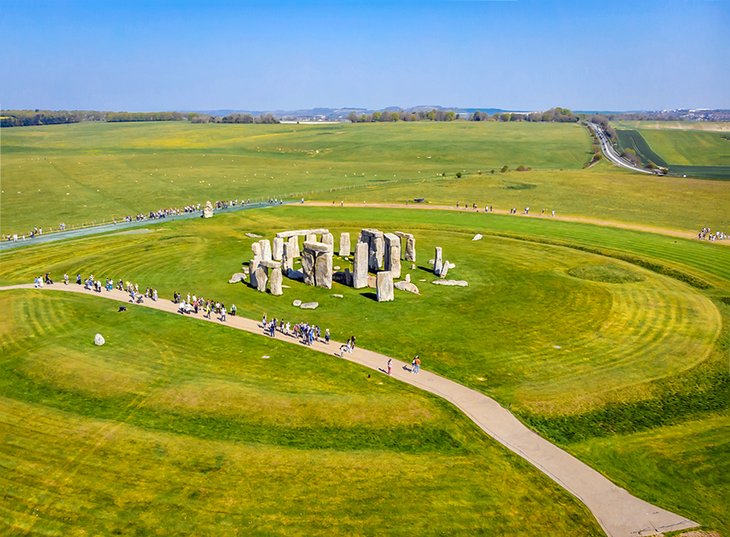
For those wanting to spend more time at Stonehenge, this is another option that's well worth considering. While this one also hands the responsibility of getting you to your destination to others happy to do it for you, it allows a great deal more freedom to explore this historic attraction at your own pace.
From the moment you climb aboard your London to Stonehenge shuttle bus at Victoria Coach Station, you're free to relax and enjoy the scenery as you travel from London through the charming English countryside to your drop-off point directly at the Stonehenge Visitor Centre. The drive is around two hours each way.
With two hours to explore at your own pace, you'll have plenty of time to truly get to know this amazing landmark. To help, a handy audio-guide is provided With your admission, and you can add to the experience by enjoying the many interactive exhibits and artifacts on display at the visitor center.
In addition to your transportation, admission is included with the cost of the trip. There's also an option to add a basic one course meal to your adventure, or you can opt to pick something up for yourself in the on-site restaurant.
3. From London to Stonehenge by Train and Bus
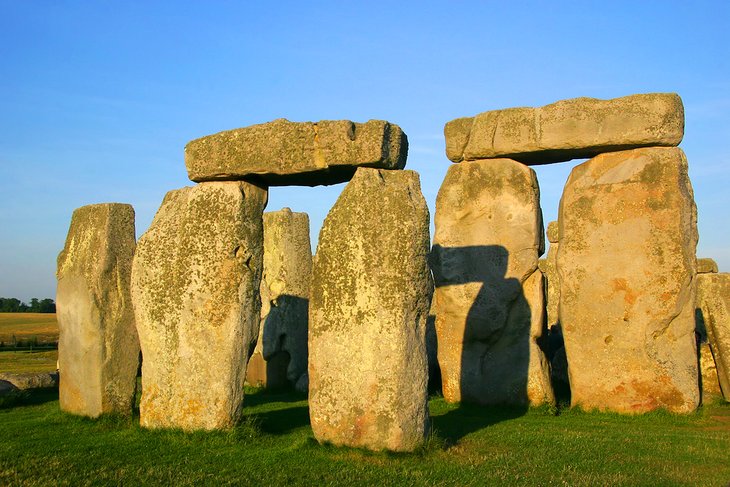
While there are no direct trains from London to Stonehenge - it's located in the middle of Salisbury Plain - rail travel is certainly something to consider, especially if you've got time on your hands.
The best option is to hop aboard the South Western Railway service to Salisbury at London Waterloo station. Trains depart regularly (there are usually two or three an hour), and the journey takes between 1.5 to 2 hours . The cheapest fares kick in after the morning rush hour, while savings can be enjoyed by travelers with advance purchase of a BritRail Pass , which can be acquired online.
While a bus from London to Salisbury can be cheaper, it can take longer than the train (up to three hours) and offers fewer departures. Buses leave from London's Victoria Coach Station as early as 6am.
However you get here, once in Salisbury, you'll need to have made plans to either rent a car and drive the 20 minutes to Stonehenge, grab an Uber or taxi, or take a bus. Cyclists may want to look into renting a bike, as you could even cycle to it in around an hour.
Fortunately for travelers, a company called Salisbury Red offers a convenient hop-on, hop-off shuttle bus service that connects directly from Salisbury city center to Stonehenge (admission included). An option to stop at the ruins of Old Sarum is available.
4. From London to Stonehenge by Car
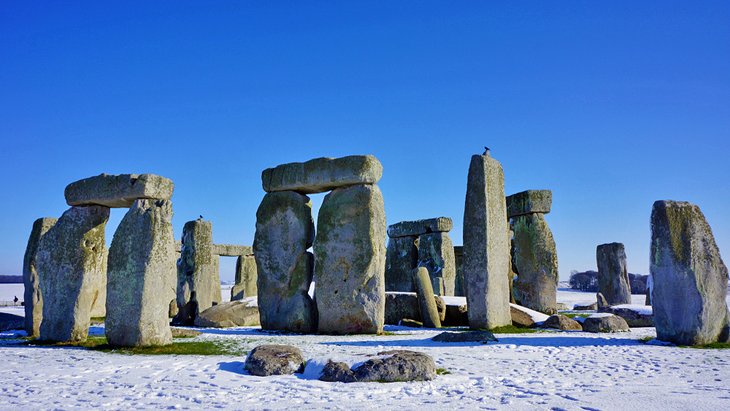
While some may enjoy driving from London to Stonehenge, it's important to remember a few key things. First, the Brits do drive on the opposite side of the road to most other countries, something that can be a little disorienting if you aren't used to it.
Their cars are also right-hand drive, meaning there's a bit of a learning curve for those traveling from places like the US, Canada, and Europe. Add to this the heavy traffic in London, plus congestion taxes, and you may want to make use of the various options mentioned above.
That said, if you're planning on taking a couple or more days, you can certainly make the most of the opportunity to explore the English countryside. And there are no end of lovely spots to visit along the way, from the beautiful Cotswolds to the charming city of Winchester . That said, journey times may be a little shorter if you pick up a car upon arrival at Heathrow Airport, so you may wish to collect a car and hit the road upon your arrival in England.
For those heading straight to Stonehenge from central London - a distance of around 88 miles - expect the journey to take between 2 to 2.5 hours , depending on traffic. From London, you'll head due west along the usually busy M3, before taking the A303 and eventually the A360 direct to Stonehenge. While parking at Stonehenge is free for those with tickets, it can be busy, especially in peak season.
An alternative that will avoid the usually heavy traffic along the approaching roads to Stonehenge is to park in Salisbury and grab the shuttle bus service mentioned in #3 above. Five park-and-stay options are available, all convenient to the city center and the shuttle bus. An added advantage is that you can also spend time exploring popular Salisbury attractions , including its magnificent cathedral.

More on England


How to Visit Stonehenge: The Ultimate Budget Guide
An ancient architectural puzzle yet to be solved, Stonehenge is a 5500 year old stone circle located in Salisbury, England. Southeast of Bath in England, it consists of about 75 stones 4 meters (13 feet) high and 2.1 meters (7 feet) wide. It is one of Europe’s most famous Neolithic monuments and has captured the imagination of the world for millennia.
History/Conspiracy
Construction of Stonehenge likely began around 3100BC. This makes it older than the pyramids in Egypt! Since the stone circle was built by a culture that had no writing system, its origin and true purpose remains shrouded in mystery. Naturally, bonkers theories abound. The biggest of Stonehenge’s stones weigh a whopping 25 tonnes – so how a stone age society could have possibly transported these objects has lead to fevered speculation. Some believe it was aliens, others say an ancient race of giants since wiped out by Noah’s flood helped the Neolithic people in their labours.
Scientists prefer less outlandish theories, such as the use of a bridge made of tree-logs laid side by side which could be used as a kind of horizontal ramp, or greasing the ground with animal fat to decrease resistance. The arrangements of the stones lines up nicely with the sun during both the longest and shortest days of the year (Summer Solstice and Winter Solstice), so they likely had ceremonial significance, possibly were believed to have healing powers, and may have functioned as a kind of ancient observatory.
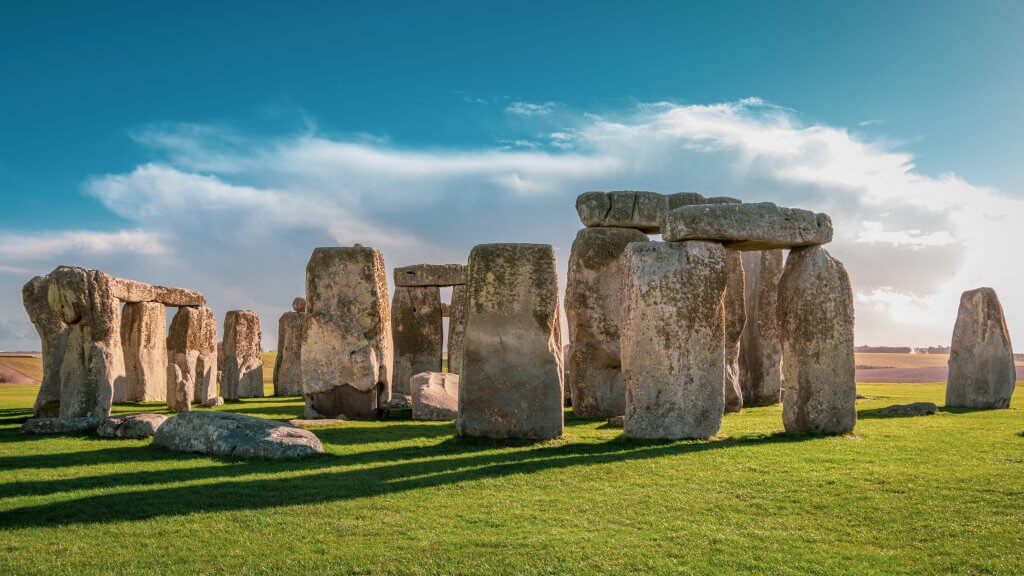
Stonehenge is such a large part of pop culture that seeing the monument in person is like meeting a celebrity. In addition to the thrill, people visit to get a clearer sense of the history of the place, and gain insight into the life and beliefs of our ancient Neolithic ancestors. Plus, the impressiveness of its staggering size and mysticism is pretty good fun.
What’s There?
In addition to the stone circle itself, there are several man-made additions and attractions designed to help you learn more about Stonehenge and the Neolithic way of life. Reconstructed Neolithic Houses stand near the monument, made with original materials and techniques. There’s also a multimedia “Standing in the Stones” experience, giving you a sense of what it would be like to be in the middle of the circle as the seasons change. The Stonehenge Exhibition lets you experience a range of Neolithic crafts and activities, and “meet” a 5500 year old man, his “real” face recreated based on bone fragments found near Stonehenge. And of course, there’s a cafe and a shop onsite.

Getting There
Stonehenge is located 36 miles (about 58 kilometres) northeast of Bath. Bath itself is a famous tourist attraction in its own right, home of ancient Roman-era springs from which the city gets its name, gorgeous stone architecture, and a wealth of great pubs, B&Bs, and attractions. The city is also associated with Jane Austen, who lived there from 1801 to 1806 (if you’re into it – check out this website for information on her connection to Bath, including the Jane Austen center!)
How to Visit Stonehenge from Bath
Bath is a popular access point for Stonehenge. By public transport, you can also take the Great Western Railway from Bath Spa Station to Salisbury, and change there for a bus to Stonehenge visitor’s center. The journey takes about 2 hours by public transport, or about 1 hour by private car or tour bus. Plenty of tours leave from bus and can be booked online or through your accommodation – see below for some options.

How to Visit Stonehenge from Salisbury
How to visit stonehenge from london.
London is a bit further away, though plenty of tourists do tackle Stonehenge in a day trip from the capital, and there are tours that offer this option and includes return transport to London, making for a full-day round trip, often including some time spent in the surrounding countryside.
Via public transport, you can take the South Western Railway from Waterloo station to Salisbury, and from there is a half-hour bus ride to the visitor’s center. The total journey time from Waterloo station to Stonehenge Visitor’s Center is about 2.15 hours. Be sure to book your railway ticket in advance to avoid high fees and ensure that you get a seat. Tickets cost vary radically – at the time of writing on their website , one-way fares are looking to be 28GBP or $35 USD booked on the day before travel.

Where To Stay
There is no accommodation at Stonehenge itself as it’s located in the countryside. There are B&Bs around, which can be booked through websites such as Home Away . For convenience as well as for the fun of the city itself, many tourists choose to stay in relatively nearby Bath, one of the UK’s most celebrated and photogenic towns which is more than worth the stopover in its own right. Its popularity does make it a pricey option in summer however.
Bath has several backpacker options including the popular St Christopher’s Inn chain, a bit shabby and rowdy but a great place to meet travelers. At the time of writing beds averaged 25GBP/30USD and can be booked through Hostel World . There are also a number of budget hotels and sometimes good deals can be found on Booking.com .
How Much Does it Cost to Visit Stonehenge?
Entrance to Stonehenge costs £19.00 (~$23USD at current Brexit exchange rates). You can buy your ticket from the visitor’s center, or get it online in advance on GetYourGuide – this option gives you a mobile voucher with instant confirmation, meaning you can skip the line. You also get free cancellation with some options, meaning that, if you change your mind because… I dunno – maybe the stones weren’t… hengey -enough for you, you can get your money back.
If Stonehenge is just one of the many heritage attractions you plan to see during your visit to England, you can also get the “ English Heritage: Attractions Pass for Overseas Visitors ” on GetYourGuide for $43, giving you access to Stonehenge as over 100 castles, mansions, ruins and prehistoric sights across the country. The pass pays for itself early on, given the abundance of sights it includes and that Stonehenge entry alone is already more than half of the pass cost.
Transport from London costs around £30GBP each way if you go using public transport. Transport from Bath costs around £19GBP, and both routes can be booked in advance online . This means, going yourself from Bath and back including ticket price will cost you about 47GBP, or £80GBP from London. Train tickets can be cheaper than this if you book in advance or travel with a discount Railcard or a Eurail Pass . To determine whether a Eurail pass is worth it for your overall trip, check our other guide here . It's also useful to reiew the perks of the Eurail Pass in Britain specifically here .
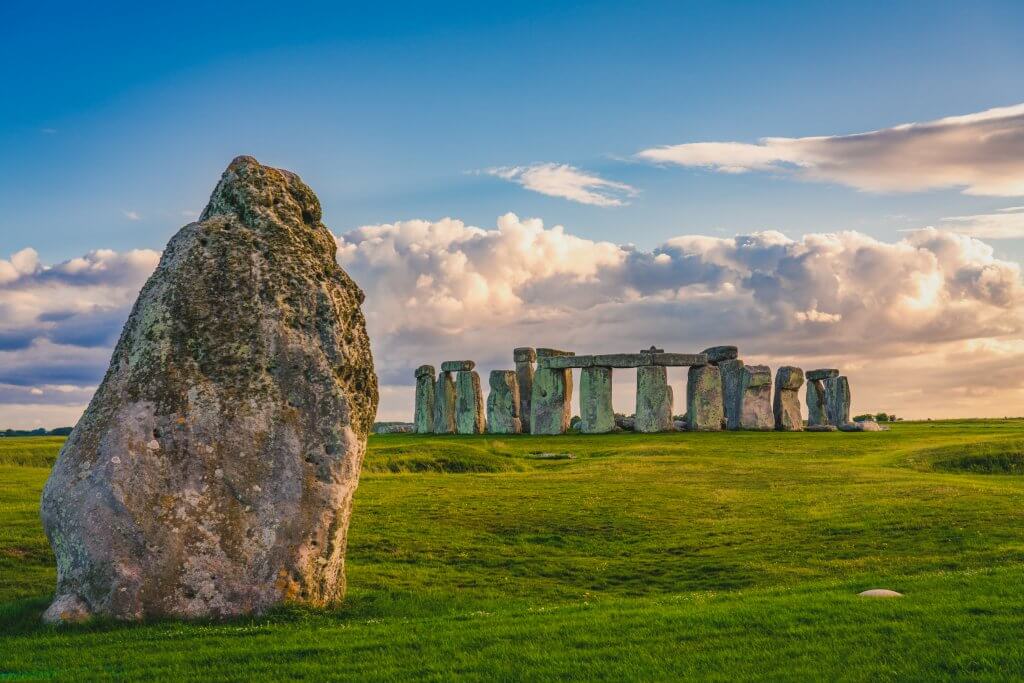
Seeing Stonehenge with a Tour
You can also take a tour from London or Bath, which will include round-trip transportation and admission. Unless you have your own car , tours are generally the most cost-effective way to take in Stonehenge.
Tours from London start from $65USD or £53GBP on GetYourGuide , often including the full round trip and some sightseeing in the surrounding countryside. For example, the popular “ London: Stonehenge, Bath & West Country Day Trip ” ($79.23) bookable through GetYourGuide takes 11 hours, and includes some time in Bath, the countryside and several picturesque villages, as well as Stonehenge itself.
Tours from Bath are harder to find on GetYourGuide but can be booked with local companies such as Scarper Tours who offer round-trip tours from Bath for £40.00GBP ($49USD) including admission. Your hostel or B&B should also be able to provide information on local tour options.
Bonus: Events at Stonehenge
From an out-of-the-box experience that will make you the envy of your fellow youth-hostel guests, you may want to think about attending one of the many events that are held at Stonehenge year-round. Look ahead on English Heritage to find out what’s coming up – some give you the chance to experience Stonehenge at night, listen to lectures and participate in workshops on ancient astronomy, or learn the art of astrophotography. You can also try your luck at getting Stone Circle Access pass, available by request only, that lets you get right inside the stone circle itself tourists are normally restricted to the perimeter for reasons of preservation.
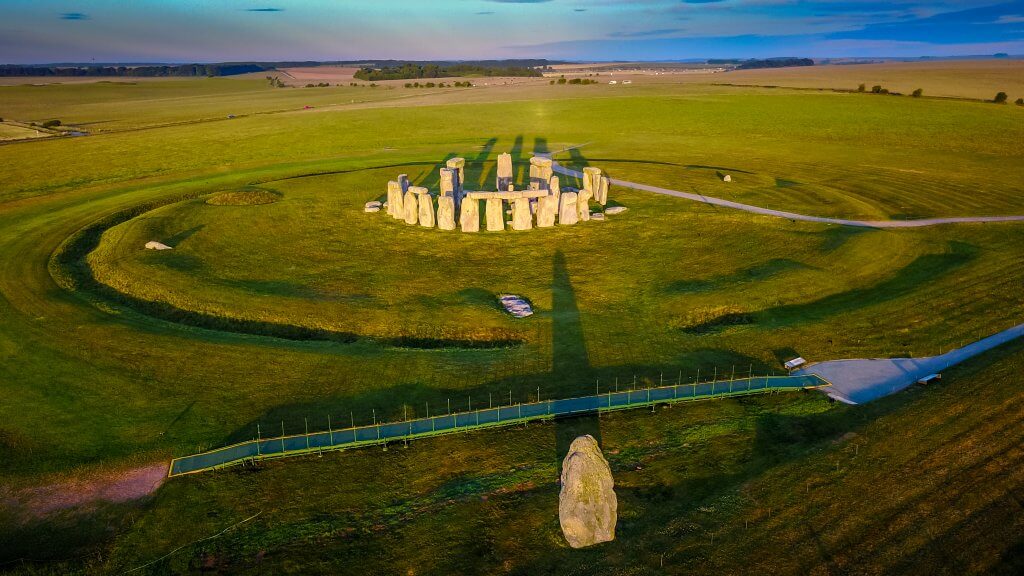
The Thrifty Gist
- Stonehenge can be visited independently via public transport from Bath (~1.5 hours) or London (~2+ hours). Alternatively you can visit via tour from Bath or London
- Tours typically include round-trip transportation, admission and some sight-seeing on the way, which can make for a hassle-free visit
- Admission is costs £19GBP and can also be booked online to skip the queue, it includes access to the stone circle, as well as reconstructed Neolithic houses and an informative visitor’s center
Bonus : Check out English-Heritage.org for events and opportunity to see Stonehenge at night and even to get inside to circle for a rare, up close & personal experience.
Stones ate about found (identified Stollen desien.) with evidence.
Leave a Reply Cancel reply
Your email address will not be published. Required fields are marked *

Home » Destinations » Europe » England » Must-Knows When Visiting Stonehenge For The First Time
Must-Knows When Visiting Stonehenge For The First Time
Links in this article may earn us a little money if you book/ order stuff. More here .
Planning On Visiting Stonehenge? Here Are All The Details From Our Trip!
Want to see something that rocks? Check out Stonehenge. Whether you decide to visit Stonehenge by car, train, bus, or on a day trip to Stonehenge from London , we think the classic monument in southern England is worth visiting!
The official site for Stonehenge has great information – like special access tours and opening hours – but it doesn’t tell you what a visit to Stonehenge is really like. That’s where we come in!
Eric got to explore the famous stone circle as a part of a smaller group tour in the early summer months.
So, while his experience might be slightly different from a visit by car, he still managed to find out all the details so you know exactly what to expect when you visit Stonehenge.
If you want to visit Stonehenge for free, there are (kind of) ways to do it which we will mention below. That said, Eric did the paid version and really enjoyed the day exploring.
So, if you’re looking for details like the best time to visit, how to visit by car or the history of Stonehenge, you’re in the right place!
Table of Contents
The Brief History of Stonehenge
Stonehenge is actually more than just the stones that we see today. The site is made up of several other monuments and mounds that have been built in stages as far back as 5,000 years ago!
In short, Stonehenge is likely the world’s most famous prehistoric monument and part of a system of Neolithic and Bronze Age monuments in the south of England.
Why the stones were placed there is still up for debate, but it’s believed (they found human remains) that the site was originally used as a burial ground.
Oh, and the site has been a UNESCO World Heritage Site since 1986. Considering some stones weigh 25 tonnes and were moved thousands of years ago – this makes sense from a cultural and historical standpoint!
Where is Stonehenge?
The site of Stonehenge is technically located in Salisbury, a small city in the south end of England between London in the east and Bristol in the west.
Stonehenge is very close to the small town of Amesbury (about 5/10 minutes driving).
Best Time to Visit Stonehenge
In terms of the time of day, the “golden hours” around sunrise and sunset make for the most beautiful, most dramatic photos.
The fog/mist will rise from the field and you can catch the light shining through the stones. Eric visited in the afternoon and it was just as lovely!
That said, you might be interested in a “special access” Stonehenge tour which allows you to walk up to/through the stones with a guide before opening hours!
Season-wise, the best time really depends on your personal preference. The summer months of June through August can be quite busy to visit – but you’ll most likely have nice weather.
Stonehenge is open year-round – it’s even open in December. Basically the only day of the year it’s officially closed to visitors is Christmas Day.
That said, Stonehenge in December is likely to be cold and pretty wet. UK winters aren’t overly snowy but they can be wet – so bring the rain jacket (like Eric’s Northface ) and/or Welly boots and you’ll be good to go!
Read Next – Visit These Top 25 Attractions in London!
Accommodations Near Stonehenge
If you wanted to stay close to Stonehenge, you might choose a larger city like Bath or Salisbury .
That said, there are some lovely cottages, B&B’s, and charming hotels in Amesbury – the closest town near the grounds of Stonehenge tucked away in the English countryside.
You can check here for accommodations near Stonehenge .
Specifically, for accommodations very close to Stonehenge, check out Fairlawn House for a cozy guest house or The George Hotel for a historic English hotel experience.
How to Get to Stonehenge
As for actually getting to Stonehenge, there are a few different options available. You might drive yourself there or take the bus/train to the nearby city.
Day trips on coach/minibuses are a popular option – and this is how Eric visited. We’ll explain all the options below!
Driving to Stonehenge
Stonehenge is located in the middle of nowhere between larger city centres and smaller towns.
This makes renting a car a really, really good option for exploring the site and the surrounding areas!
Address: Salisbury SP4 7DE, UK
As mentioned above, the stones are about 3 kilometres west of the town of Amesbury and around 20 minutes driving north from the larger city of Salisbury.
From the spa city of Bath, the rocks are located just an hour away to the south by driving the A36. From London, Stonehenge is about 2.5 hours driving southwest on the M3 (traffic depending).
Walking/Biking to Stonehenge
You could walk or bike to Stonehenge if you’re staying in the area. Ideally, you are staying in Amesbury.
If not, aim for Amesbury and then walk to the site using the green foot/cycle paths available through the countryside. It’s about 3 km so definitely doable in a day and back.
Train to Stonehenge
If you want to take the train to visit Stonehenge, you’ll be able to get most of the way.
The UK has a pretty good rail system and you’ll be looking to get to the closest station which is in Salisbury.
From the city centre and train station of Salisbury, you can hop on a green tour bus to go the extra drive to the main entrance. You can search for train times at the National Rail website .
Bus to Stonehenge
For the bus to Stonehenge, it’s basically the same as the train.
You’ll need to get to Salisbury and then take the green bus tour to get to the main site and Visitor’s Centre.
Guided Day Tours to Stonehenge
As we have said, getting to Stonehenge yourself is absolutely possible but visiting on a tour seems to be the overwhelming method of choice.
This make sense: for a fixed fee, you don’t have to worry about parking, buying your own tickets, etc.
You just show up on the coach, get your wristband from a guide, enjoy exploring the grounds (with an audio guide or your live guide) and leave again hassle-free. Pretty simple.
Of course, Stonehenge is a very popular day trip from London.
It’s an easy drive of between 2 to 2.5 hours and worth it if you are passing through London for a day or two or staying in England for longer.
Day trips to Stonehenge will differ because they usually include one or two other places to see.
For example, you might want a day tour to the beautiful city of Bath that includes Stonehenge . You might want to see nearby towns like Bristol or the southern English coast with Brighton or the Seven Sisters Cliffs.
It depends on your budget, interests, and where you are travelling from. We’d recommend this Stonehenge Day Tour (similar to Eric’s trip) but there are many great Stonehenge tours from London to choose from!
⇒ Stonehenge, Bath & West Country Day Trip – Discover Stonehenge and Beautiful Bath from London! ⇒ Full-Day Windsor, Stonehenge & Oxford Tour – Explore Stonehenge, Oxford, and Windsor from London! ⇒ Stonehenge, Bath, Lacock & Avebury Full-Day Tour – Add on Lacock + Avebury for a Well-Rounded Trip from London!
Arriving at Stonehenge: Entrance, Parking, & Admission Fees
Once you actually get to Stonehenge, your visit will go like this: you arrive, park, and gather your wristbands to visit the grounds.
Then you can walk to the stones or hop on a shuttle to be taken to the actual site of Stonehenge (about 5 minutes driving by shuttle bus) from this first parking/staging area. We will break these steps down below:
Entrance and Parking at Stonehenge
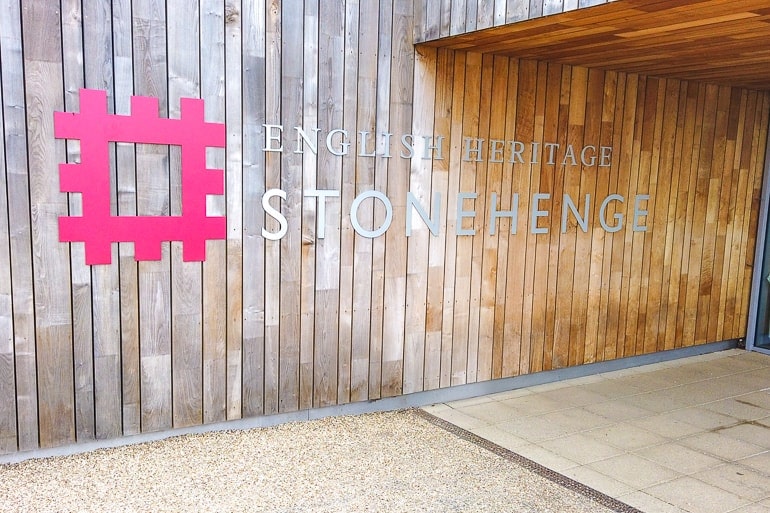
There’s a roundabout to enter the parking lots near the Visitor’s Centre. As for parking, it depends on how you got to Stonehenge.
There are two separate parking lots: one for cars (turn right after the roundabout) and one for tour/coach buses (turn left after the roundabout). You access both from the main roundabout near the entrance.
If you drove yourself, you have to pay 5 pounds for parking BUT you “get that refunded” when you buy your entrance ticket to see the stones.
Otherwise, some use the car park to visit the area nearby and the Visitor’s Centre, have a picnic on the green landscape, etc. – basically do things other than seeing the stones.
If you are planning your visit to Stonehenge, you should check here for admission prices and opening hours .
The last admission to Stonehenge is two hours before closing time each day. So keep that in mind if you are planning your day!
Admission Costs for Stonehenge
The admission prices for Stonehenge will differ based on age, family size, and whether you are part of the UK National Trust.
Ticket prices will also depend on whether you are travelling as part of a big group or part of an educational tour.
If you want to book a visiting ticket in advance because you know which day you wish to visit, you can book your day and time to visit Stonehenge here .
You are encouraged (by GetYourGuide + Heritage England) to book your ticket in advance because that guarantees you the time you want AND it’s a bit cheaper than a “walk-up” price.
You CAN still (June, 2019) visit Stonehenge for free – but not exactly like the people who pay for admission.
We didn’t do this method but if you have a car you can take a gravel road north of the site, park along it, and walk in to near the stones.
Once you are close to the site, you’ll see a public gateway/path which is quite close to the “paid” entrance. You’ll be about 20 yards behind the “paid” visitors at their farthest vantage point – but you can still see the site.
Exploring the Stonehenge Visitor Centre
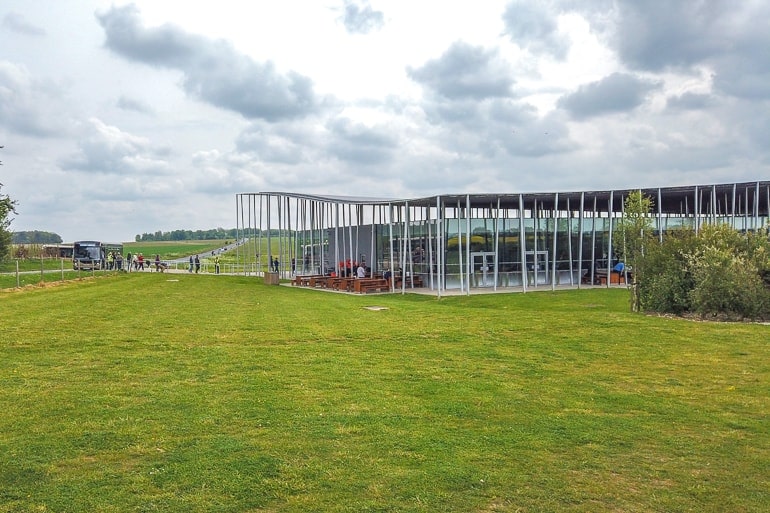
Once you’re all settled and paid with your wristbands/tickets, you can grab an orientation leaflet that tells you what’s going on at the site.
There is actually plenty to see and do at the Visitor’s Centre area before you even head out to the stone circle.
There is a museum onsite and a separate indoor exhibit to virtually “stand inside” the stones.
At these main exhibits, you can learn about the history of the monument like the people who lived there, see their artefacts that have been found, and even see a forensically reconstructed face to get an idea of how these early settlers may have looked like!
If you need a break before or after the visit, there’s a cafe onsite where you can get real food as well as ice cream, hot drinks, cakes, and even a beverage from Stonehenge Brewery!
Of course, you’ll also find the washrooms, baby change facilities, etc.
Likely the coolest part of the site is exploring the Neolithic village and the life of the people who built Stonehenge.
So, you can wander through a small village that has been re-created with Neolithic houses from the time period. You can explore the houses, their contents, the tools used in the day, and more to get a sense of life back then.
They have volunteers on-site who demonstrate making rope, flint pointed knives/arrowheads and more using old techniques.
There’s even a stone that you can try to pull along on its cart/sled (demonstrating how the stones were moved thousands of years ago). Spoiler: it’s heavy.
Getting to The Actual Stones Once At Stonehenge
As we mentioned about, once you park you aren’t even close to the Stones. You need to grab your ticket/wristbands for entry to see the stones.
Once you do that, you can hop on the shuttle bus or walk to the stones.
Shuttle to Stonehenge

If you want to be driven to the stones, the shuttle is included in your ticket.
So you would just park, then pick up your wrist bands (assuming you booked ahead) at the Visitor’s Centre, then get on the shuttle bus. Eric’s guide got the wristbands for the group.
As you can see below, you simply cue up and show your ticket/wristband and get on the bus.
It drives a straight road up and over a hill about 5ish minutes where you get off and you are at the site of the stones! Eric took the shuttle there.
Walking to Stonehenge
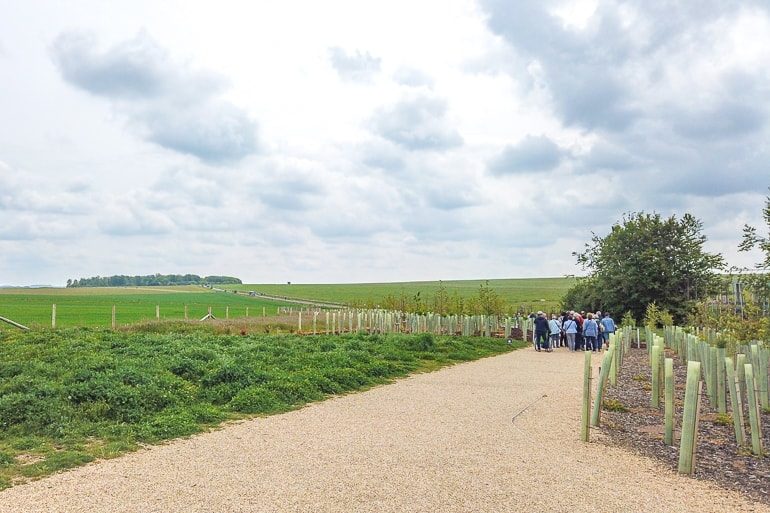
You can walk to the stones, too. Eric did that on the way back from the stones to the Visitor’s Centre.
It only took about 20 minutes at a good pace and was definitely worth it for the exercise, fresh air, and experience. You CAN walk halfway (there or back) – the shuttle does stop in the middle between the stones and the Visitor’s Centre for that option.
If you commit to the whole walk, just make sure you have enough time if you are catching a tour bus outta there!
Exploring the Grounds at Stonehenge
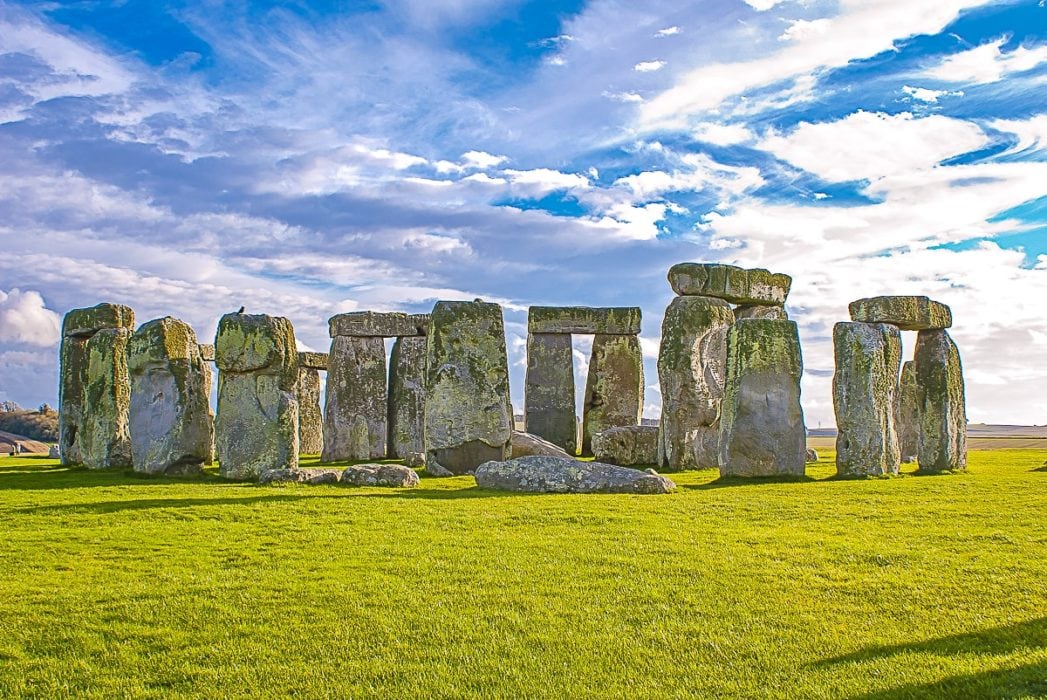
So, once you get off the shuttle or walk to the actual stones, you’ll see them up the slight hill. Just follow the path ahead and you’ll soon be pretty close to the ruins themselves!
As you circle the stones, some of the walkways are on a gravel path while other portions are on the open grass. That said, plan your footwear accordingly.
Just so we’re clear – you cannot go right up and touch the stones on a regular admission visit.
This is too bad because a local taxi driver told us the story of how they used to drive right up in the 1970s and hang out among the stone. What a shame!
If you want this experience, you have to be on a special tour which takes you right in the stones but these tours have very limited availability.
You might have also come on a day trip with a guide who will talk to you about the stones in which case you’ll get all the right information as you walk along.
As you explore, you will see numbered signs on things around the grounds. These numbers correspond with the audio guide information.
If you do rent an audio guide (available in 10 languages and for a small additional fee) from the Visitor’s Centre, you’ll get some extra knowledge during your visit.
If you didn’t rent an audio guide at the Visitor’s Centre, you can actually also download a Heritage England official app to your smartphone for similar information.
Check for it in the Google Play Store or the App Store . Eric downloaded it but got too excited to listen to it and just took in the wander around the stones.
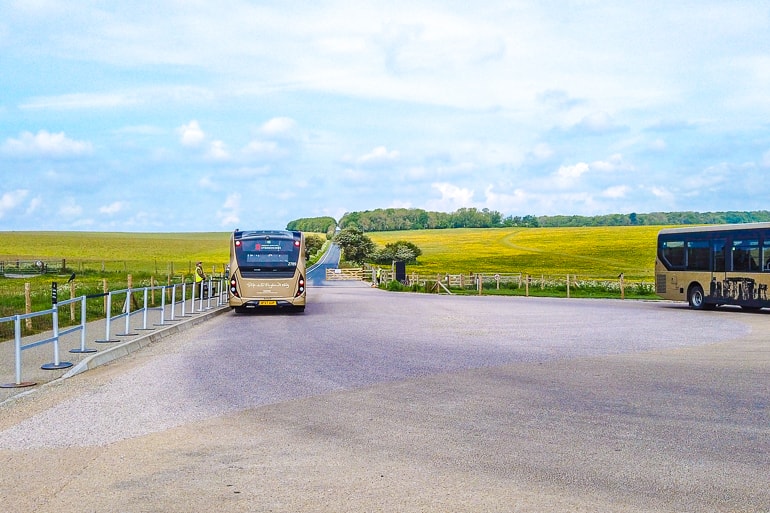
When Eric was there, there were quite a few people visiting and taking loads of photos. This was in mid-May so we can imagine the experience being different in the busy summer season.
Once you are done exploring the stones, you can walk back to the Visitor’s Centre or simply hop on the shuttle again.
The choice is yours – and might depend on the size of the crowd and how much walking you have already done that day!
And there you have it – a few of the important details if you are planning a visit to Stonehenge.
Honestly, the prices are a little high for entrance, any food, etc – but overall we’d say the experience of being there, seeing it, and exploring the additional exhibits is worth it.
Definitely leave time to see the Visitor’s Centre because you’ll appreciate the actual site that much more knowing the backstory! Let us know what you think!
- Compare flights on Skyscanner
- Check for Hotel Deals or Book A Hostel
- Get A Rental Car (depending on the destination)
- Research plug types and possibly get a travel adapter
- Go over our packing list
As an Amazon Associate we earn from qualifying purchases.
Destinations
Privacy policy
Disclaimer & Affiliate Disclosure
Terms of use
© 2024 Creativlier Media Inc.

The Eclipse That Ended a War and Shook the Gods Forever
Thales, a Greek philosopher 2,600 years ago, is celebrated for predicting a famous solar eclipse and founding what came to be known as science.
Credit... John P. Dessereau
Supported by
- Share full article
By William J. Broad
William J. Broad studied the history of science in graduate school and still follows it for the light it casts on modern developments. This article is part of The Times’s coverage of the April 8 eclipse , the last time a total solar eclipse will be visible in most of North America for 20 years.
- Published April 6, 2024 Updated April 7, 2024
In the spring of 585 B.C. in the Eastern Mediterranean, the moon came out of nowhere to hide the face of the sun, turning day into night.
Back then, solar eclipses were cloaked in scary uncertainty. But a Greek philosopher was said to have predicted the sun’s disappearance. His name was Thales. He lived on the Anatolian coast — now in Turkey but then a cradle of early Greek civilization — and was said to have acquired his unusual power by abandoning the gods.
The eclipse had an immediate worldly impact. The kingdoms of the Medes and Lydian had waged a brutal war for years. But the eclipse was interpreted as a very bad omen, and the armies quickly laid down their arms. The terms of peace included the marriage of the daughter of the king of Lydia to the son of the Median king.
The impiety of Thales had a more enduring impact, his reputation soaring over the ages. Herodotus told of his foretelling. Aristotle called Thales the first person to fathom nature. The classical age of Greece honored him as the foremost of its seven wise men.
Today, the tale illustrates the awe of the ancients at the sun’s disappearance and their great surprise that a philosopher knew it beforehand.
The episode also marks a turning point. For ages, eclipses of the sun were feared as portents of calamity. Kings trembled. Then, roughly 2,600 years ago, Thales led a philosophical charge that replaced superstition with rational eclipse prediction.
Today astronomers can determine — to the second — when the sun on April 8 will disappear across North America. Weather permitting, it’s expected to be the most-viewed astronomical event in American history, astonishing millions of sky watchers.
“Everywhere you look, from modern times back, everyone wanted predictions” of what the heavens would hold, said Mathieu Ossendrijver , an Assyriologist at the Free University of Berlin. He said Babylonian kings “were scared to death by eclipses.” In response, the rulers scanned the sky in efforts to anticipate bad omens, placate the gods and “strengthen their legitimacy.”
By all accounts, Thales initiated the rationalist view. He’s often considered the world’s first scientist — the founder of a radical new way of thinking.
Patricia F. O’Grady, in her 2002 book on the Greek philosopher, called Thales “brilliant, veracious, and courageously speculative.” She described his great accomplishment as seeing that the fraught world of human experience results not from the whims of the gods but “nature itself,” initiating civilization’s hunt for its secrets.

Long before Thales, the ancient landscape bore hints of successful eclipse prediction. Modern experts say that Stonehenge — one of the world’s most famous prehistoric sites, its construction begun some 5,000 years ago — may have been able to warn of lunar and solar eclipses.
While the ancient Chinese and Mayans noted the dates of eclipses, few early cultures learned how to predict the disappearances.
The first clear evidence of success comes from Babylonia — an empire of ancient Mesopotamia in which court astronomers made nightly observations of the moon and planets, typically in relation to gods and magic, astrology and number mysticism.
Starting around 750 B.C. , Babylonian clay tablets bear eclipse reports. From ages of eclipse tallies, the Babylonians were able to discern patterns of heavenly cycles and eclipse seasons. Court officials could then warn of godly displeasure and try to avoid the punishments, such as a king’s fall.
The most extreme measure was to employ a scapegoat. The substitute king performed all the usual rites and duties — including those of marriage. The substitute king and queen were then killed as a sacrifice to the gods, the true king having been hidden until the danger passed.
Initially, the Babylonians focused on recording and predicting eclipses of the moon, not the sun. The different sizes of eclipse shadows let them observe a greater number of lunar disappearances.
The Earth’s shadow is so large that, during a lunar eclipse, it blocks sunlight from an immense region of outer space, making the moon’s disappearance and reappearance visible to everyone on the planet’s night side. The size difference is reversed in a solar eclipse. The moon’s relatively small shadow makes observation of the totality — the sun’s complete vanishing — quite limited in geographic scope. In April, the totality path over North America will vary in width between 108 and 122 miles.
Ages ago, the same geometry ruled. So the Babylonians, by reason of opportunity, focused on the moon. Eventually, they noticed that lunar eclipses tend to repeat themselves every 6,585 days — or roughly every 18 years. That led to breakthroughs in foreseeing lunar eclipse probabilities despite their knowing little of the cosmic realities behind the disappearances.
“They could predict them very well,” said John M. Steele , a historian of ancient sciences at Brown University and a contributor to a recent book , “Eclipse and Revelation.”
This was the world into which Thales was born. He grew up in Miletus, a Greek city on Anatolia’s west coast. It was a sea power . The city’s fleets established wide trade routes and a large number of colonies that paid tribute, making Miletus wealthy and a star of early Greek civilization before Athens rose to prominence.
Thales was said to have come from one of the distinguished families of Miletus, to have traveled to Egypt and possibly Babylonia , and to have studied the stars. Plato told how Thales had once tumbled down a well while examining the night sky. A maidservant, he reported, teased the thinker for being so eager to know the heavens that he ignored what lay at his feet.
It was Herodotus who, in “The Histories,” told of Thales’s predicting the solar eclipse that ended the war. He said the ancient philosopher had anticipated the date of the sun’s disappearance to “within the year” of the actual event — a far cry from today’s precision.
Modern experts, starting in 1864, nonetheless cast doubt on the ancient claim. Many saw it as apocryphal. In 1957, Otto Neugebauer, a historian of science, called it “very doubtful.”
In recent years, the claim has received new support. The updates rest on knowledge of the kind of observational cycles that Babylon pioneered. The patterns are seen as letting Thales make solar predictions that — if not a sure thing — could nevertheless succeed from time to time.
If Stonehenge might do it occasionally, why not Thales?
Mark Littmann, an astronomer, and Fred Espenak , a retired NASA astrophysicist who specializes in eclipses, argue in their book , “Totality,” that the date of the war eclipse was relatively easy to predict, but not its exact location. As a result, they write , Thales “could have warned of the possibility of a solar eclipse.”
Leo Dubal, a retired Swiss physicist who studies artifacts from the ancient past and recently wrote about Thales, agreed. The Greek philosopher could have known the date with great certainty while being unsure about the places where the eclipse might be visible, such as at the war’s front lines.
In an interview and a recent essay , Dr. Dubal argued that generations of historians have confused the philosopher’s informed hunch with the precision of a modern prediction. He said Thales had gotten it exactly right — just as the ancient Greeks declared.
“He was lucky,” Dr. Dubal said, calling such happenstance a regular part of the discovery process in scientific investigation.
Over the ages, Greek astronomers learned more about the Babylonian cycles and used that knowledge as a basis for advancing their own work. What was marginal in the days of Thales became more reliable — including foreknowledge of solar eclipses.
The Antikythera mechanism, a stunningly complex mechanical device, is a testament to the Greek progress. It was made four centuries after Thales, in the second century B.C., and was found off a Greek isle in 1900. Its dozens of gears and dials let it predict many cosmic events, including solar eclipse dates — though not, as usual, their narrow totality paths.
For ages, even into the Renaissance, astronomers kept upgrading their eclipse predictions based on what the Babylonians had pioneered. The 18-year cycle, Dr. Steele of Brown University said, “had a really long history because it worked.”
Then came a revolution. In 1543, Nicolaus Copernicus put the sun — not Earth — at the center of planetary motions. His breakthrough in cosmic geometry led to detailed studies of eclipse mechanics.
The superstar was Isaac Newton — the towering genius who in 1687 unlocked the universe with his law of gravitational attraction. His breakthrough made it possible to predict the exact paths of not only comets and planets but the sun, the moon and the Earth. As a result, eclipse forecasts soared in precision.
Newton’s good friend, Edmond Halley, who lent his name to a bright comet, put the new powers on public display. In 1714, he published a map showing the predicted path of a solar eclipse across England in the next year.
Halley asked observers to determine the totality’s actual scope. Scholars call it history’s first wide study of a solar eclipse. In accuracy, his predictions outdid those of the Astronomer Royal, who advised Britain’s monarch y on astronomical matters.
Today’s specialists, using Newton’s laws and banks of powerful computers, can predict the movements of stars for millions of years in advance.
But closer to home, they have difficulty making eclipse predictions over such long periods of time. That’s because the Earth, the moon and the sun lie in relative proximity and thus exert comparatively strong gravitational tugs on one another that change subtly in strength over the eons, slightly altering planetary spins and positions.
Despite such complications, “it’s possible to predict eclipse dates more than 10,000 years into the future,” Dr. Espenak, the former NASA expert, said in an interview.
He created the space agency’s web pages that list solar eclipses to come — including some nearly four millenniums from now.
So, if you’re enthusiastic about the April 8 totality, you might consider what’s in store for whoever is living in what we today call Madagascar on Aug. 12, 5814. According to Dr. Espenak, that date will feature the phenomenon of day turning into night and back again into day — a spectacle of nature, not of malevolent gods.
Perhaps it’s worth a moment of contemplation because, if for no other reason, it represents yet another testament to the wisdom of Thales.
William J. Broad is a science journalist and senior writer. He joined The Times in 1983, and has shared two Pulitzer Prizes with his colleagues, as well as an Emmy Award and a DuPont Award. More about William J. Broad
Advertisement
Virtual Travel
A Smithsonian magazine special report
How to Livestream Stonehenge’s Summer Solstice Celebrations
Annual event at the Neolithic monument will be broadcast virtually in place of an in-person gathering
/https://tf-cmsv2-smithsonianmag-media.s3.amazonaws.com/accounts/headshot/Sexton_Remy.jpg)
Courtney Sexton
:focal(611x623:612x624)/https://tf-cmsv2-smithsonianmag-media.s3.amazonaws.com/filer/56/a3/56a31aa7-99bb-4e61-ad3b-1cdfbddf8993/summer_solstice_sunrise_over_stonehenge_2005.jpg)
Amid extended COVID-19 lockdowns, many are experiencing a warped sense of time . But marking the hours’ passing is something people have done for thousands of years. Regardless of the instrument or calendar used, tracking changes in the days and seasons has, historically, been a matter of survival.
Stonehenge , a roughly 5,000-year-old monument in southern England, is among the most famous prehistoric archaeological sites in the world. Though scholars disagree over the Neolithic stone circle’s purpose, a leading theory suggests it functioned as a massive sundial .
In typical years, crowds of thousands visit the archaeological marvel to celebrate the summer solstice. But 2020 is no ordinary year. Due to COVID-19 concerns, English Heritage , the organization that maintains the historic site (which has been closed since March 18), has canceled the annual celebration and instead asked visitors to mark the occasion via livestream.
“We have consulted widely on whether we could have proceeded safely and we would have dearly liked to host the event as per usual, but sadly in the end, we feel we have no choice but to cancel,” says Stonehenge director Nichola Tasker in a statement . “We hope that our livestream offers an alternative opportunity for people near and far to connect with this spiritual place at such a special time of year and we look forward to welcoming everyone back next year.”
Those living in the Northern Hemisphere recognize the summer solstice as the longest day of the year. Celebrated between June 20 and 22, depending on the year, it traditionally signals both the end of the spring planting season and the beginning of the summer growing season.
To many, Stonehenge is more than just a megalithic timepiece: Modern druid and pagan communities, for instance, “believe it is their temple and it is their right to worship there,” English Heritage senior curator Heather Sebir told Time ’s Rachael E. Greenspan in 2019. To these groups, visiting Stonehenge is “the equivalent … of coming to a church or cathedral.”
At Stonehenge, rocks—some measuring more than 30 feet high—are positioned to align with the midsummer sunrise and the midwinter sunset. On the summer solstice, the Earth’s North Pole is on its maximum tilt toward the sun, allowing the star to reach its zenith, or highest point in the sky. According to the British Press Association , “On the summer solstice, the sun rises behind the Heel Stone, the ancient entrance to the Stone Circle, and rays of sunlight are channeled into the center of the monument.”
Writing for CTV News , Lianne Kolirin adds, “As dawn breaks, the rising sun appears behind one of the main stones, creating the illusion that the sun is balancing on the stone.”
/https://tf-cmsv2-smithsonianmag-media.s3.amazonaws.com/filer/3b/42/3b423e10-5599-47df-afbf-ffd8ccd949a2/stonehenge_summer_solstice_tv_reporter.jpg)
English Heritage will livestream two solstice events for free via its Facebook page . Tune in to catch the sunset on June 20 and the sunrise on June 21.
As Deborah Byrd and Eleanor Imster report for EarthSky , Stonehenge is also connected to the winter solstice—the Northern Hemisphere’s shortest day of the year. Around December 20, the sun sets over a structure known as the Trilithon, which is made up of two large vertical stones topped by a horizontal slab.
“This huge megalithic monument shows how carefully our ancestors watched the sun,” write Byrd and Imster. “Astronomical observations such as these surely controlled human activities such as the mating of animals, the sowing of crops and the metering of winter reserves between harvests.”
According to English Heritage , Stonehenge’s earliest structures are pits that appear to have held large pine posts. They date to between 8500 and 7000 B.C. Though the Heel Stone may have been erected prior, the site’s first documented construction event centered on a large, circular ditch with two entrances that formed a henge-style monument with banks on either side. By 2500 B.C., stones had been set up in the center of the monument and in two concentric circles around it.
Since the 1970s, much of the monument has been roped off to help prevent erosion and degradation; when the site reopens to visitors on July 4, viewing will be from within a short distance of the stones. Despite these restrictions, Stonehenge—both on the solstice and throughout the year—endures as one of the most inspiring places to reflect on the great mystery of mankind’s history.
Get the latest stories in your inbox every weekday.
/https://tf-cmsv2-smithsonianmag-media.s3.amazonaws.com/accounts/headshot/Sexton_Remy.jpg)
Courtney Sexton | READ MORE
Courtney Sexton, a writer and researcher based in Washington, DC, studies human-animal interactions. She is a 2020 AAAS Mass Media Fellow and the co-founder and director of The Inner Loop, a nonprofit organization for writers.

Stonehenge II becomes eclipse-watching hotspot as people flock to replica of mystical monument
Across the US, people are gathering along the path of totality to try and get the best view of the total solar eclipse.
Huge crowds have gathered along the predicted path, from Texas to Maine, to try and secure the best spot for the eclipse today. Some have spent hours securing their coveted spots, with people pitching up with camping chairs and tents as they settle in to wait for the huge event.
In the small town of Ingram, Texas, people have driven for hours to catch a glimpse as the Moon completely blocks out the sun , setting up tents or even mobile homes along the river bank to try and see the spectacle. The river runs alongside Stonehenge II, a park featuring a replica of the mysterious monument that calls England home.
READ MORE: Reality of solar eclipse conspiracy theories from apocalypse to 'special powers'
The park has a camping field with spaces reserved for those who wish to spend the night, as well as a food court and huge eclipse observation area. In fact, Hills Country Arts Foundation, which runs the park, has turned it into a full event with wine tasting and karaoke the night before, and a beer tent open throughout the day on Monday.
The town of Ingram lies just outside of Kerrville, which will see the eclipse for four minutes and 24 seconds at around 1.32pm local time. Among those who have set up ahead of the eclipse is one man who came equipped with his tent and camera the day before the big event.
Ingram lies in the path of totality, where the Moon is set to pass in front of the sun, completely obscuring its daylight as day turns to night for a period of time around lunchtime. Forecasts for parts of the totality path, including Ingram, are looking slightly overcast, which could mean those who have picked a spot and waited, pinning their hopes on getting a view, may be disappointed.
In Ingram, the weather is forecast to be mostly cloudy with some sunny spells, with AccuWeather warning the temperature can drop several degrees during the eclipse. A storm alert has also been issued for the town, with the state government preparing emergency teams on standby in case the weather takes a nasty turn.
But, nothing seems to be discouraging visitors who are keen to get the best view possible. Visitors have brought telescopes and powerful telephoto lenses in the hopes of getting an up-close view of the incredible event, with hopes that the skies will clear just as the Moon begins to block out the sun.
"We have a saying here in Texas that if you don't like the weather, wait five minutes," said Jennyth Peterson, a Special Events Director for the Hills Country Arts Foundation, which runs the Stonehenge II park. Eclipse chasers have descended on the park, including 44-year-old Shelli Ezell who traveled with her family from Alabama for a chance to catch a glimpse.
Join the Mirror's SMS news service to get the biggest breaking stories delivered straight to your phone. Click here to subscribe.
For Shelli, this eclipse will be particularly poignant. She has traveled with her 10-year-old son and 15-year-old daughter this time, but sadly they are without her other daughter, Mary Elizabeth, who was with them at the 2017 eclipse but died of cancer at age 12.
Mary, known as Marybeth, and her mom made their first 'girls trip' to Idaho to watch the 2017 eclipse. Shelli recalled: "It was just a beautiful moment. And it's just a memory that I hold dear to my heart."
"I'm going to enjoy the day," the mom added. "but just being here when you experience totality and you just... you actually get that feeling of just how small you are in comparison to how big the universe is. And for that moment, I think I might feel closer to my daughter too."


IMAGES
COMMENTS
Stonehenge visiting hours are 9:30 - 3:00 during the winter months and 9:30 - 5:00 over the spring/summer/autumn months. The last entry is 2 hours before closing time (so if you book a ticket for 3 pm in the winter Stonehenge closes at 5 pm)
Lying some 150km west of London in the Wiltshire countryside, Stonehenge is perhaps the world's most awe-inspiring ancient stone circle. Older than the Great Pyramids and the Roman Empire, the origin of its story began some 9,000 years ago. A place of worship, meeting, burial and wonder, what Stonehenge represents has changed throughout its history.
How to visit. Summer solstice is the most popular time to visit Stonehenge. During the summer solstice, the sun rises behind the Heel Stone, and its first rays shine into the heart of Stonehenge ...
The long-awaited Outlander television show premieres tomorrow night at 9 p.m. on STARZ. Coincidentally, National Geographic 's August cover story, "The First Stonehenge," is about recently ...
Public Transport. It's easy to travel to Stonehenge by public transport and every year more and more people are choosing to leave their car at home. Nearest bus and railway stations: Salisbury (12 miles/19 kms) away. By train: Regular services to Salisbury from London, Bristol/Bath and Southampton. By taxi: Available at Salisbury train station.
Was in August 1971 when a group of hippies decided to camp there, to light a fire and spend a nice night., singing, smoking around the camp fire. About 2 am, a storm started from nowhere. A thunder crashed in the Salisbury Plain with bolts of light hitting the trees and the stones.
TIME TRAVEL ADVENTURE:- An archaeological dig at Stonehenge turns into a nightmare for young Jack Shire when he is blasted into a terrifying prehistoric world, simultaneously unveiling a deadly, 21st century secret.
As the Old Testament said: "To everything there is a season, and a time for every purpose under the heaven.". Located at the meeting point of ancient trackways, the Stonehenge calendar was as important to the time regulation of prehistoric England as Greenwich time is today. When Stonehenge was constructed in its final form around 2,500 BC ...
A timeline of Stonehenge. The first Stonehenge was built about 5,000 years ago, in the period of prehistory known as the Neolithic. By about 2500 BC, more and much larger stones had been brought there, marking the start of over 800 years of building and alteration stretching into the Bronze Age. But Stonehenge has inspired people to study and ...
The Stonehenge World Heritage Site is famous throughout the world and is one of the most important prehistoric landscapes in Europe. Today this landscape is split in two by a major road - the A303 - which acts as a barrier to people enjoying, exploring and understanding the World Heritage Site. The Government has approved plans to replace part ...
Stonehenge, prehistoric stone circle monument, cemetery, and archaeological site located on Salisbury Plain, about 8 miles (13 km) north of Salisbury, Wiltshire, England.Though there is no definite evidence as to the intended purpose of Stonehenge, it was presumably a religious site and an expression of the power and wealth of the chieftains, aristocrats, and priests who had it built—many of ...
The last time to buy tickets at the Stonehenge site is 4:30 pm during the summer season (June, July, and August) and 2:30 pm in autumn, winter, and spring. Pro Tip: Stonehenge can get very busy between 11 am and 2 pm and on bank holidays. So those who want some peaceful time for reflection at the historic monuments should visit at other times.
The English Bus - Stonehenge, Bath & A Secret Place. Price: From 134 pounds (around $170) per person. Duration: 12 hours. For adventurous travelers who want to see Stonehenge and Bath, and don't ...
Stonehenge Opening Times. Stonehenge is open from Monday through Sunday. During the off-season (January to March and November to December) from 9:30 to 17:00 [9:30 am - 5 pm]. During shoulder season (April to May and September to October) the opening hours are from 9:00 to 19:00 [9 am - 7 pm].
Stonehenge may be a rebuilt stone circle from Wales, new research suggests. A ring of 30 upright sarsen stones, supporting 30 horizontal lintels, represent the days within a month. Distinctive ...
1. From London to Stonehenge by Tour Stonehenge. For those wanting to see multiple attractions while in England, an organized day trip from London to Stonehenge via Windsor Castle and including Bath is a great option. This superb day-long excursion lasts approximately 11 hours and manages to allow you to tick off three of the country's most popular tourist destinations in one go (albeit a long ...
Getting to Stonehenge from London is easy and there are several ways to travel. By train. Salisbury is the nearest train station. There is a direct line from London Waterloo which takes around 1h30m. From Salisbury you can take a taxi from the station (12 miles/19 km) or take the Stonehenge Tour Bus which departs hourly from the railway station ...
How to Visit Stonehenge from London. London is a bit further away, though plenty of tourists do tackle Stonehenge in a day trip from the capital, and there are tours that offer this option and includes return transport to London, making for a full-day round trip, often including some time spent in the surrounding countryside.. Via public transport, you can take the South Western Railway from ...
Best Time to Visit Stonehenge. In terms of the time of day, the "golden hours" around sunrise and sunset make for the most beautiful, most dramatic photos. The fog/mist will rise from the field and you can catch the light shining through the stones. Eric visited in the afternoon and it was just as lovely!
Modern experts say that Stonehenge — one of the world's most famous prehistoric sites, its construction begun some 5,000 years ago — may have been able to warn of lunar and solar eclipses.
This year's event will be livestreamed. Andrew Dunn via Wikimedia Commons under CC BY-SA 2.0. English Heritage will livestream two solstice events for free via its Facebook page. Tune in to catch ...
She has traveled with her 10-year-old son and 15-year-old daughter this time, but sadly they are without her other daughter, Mary Elizabeth, who was with them at the 2017 eclipse but died of ...
A total solar eclipse created a celestial spectacle Monday in the skies over parts of Mexico, the United States and Canada after a nearly seven-year wait.